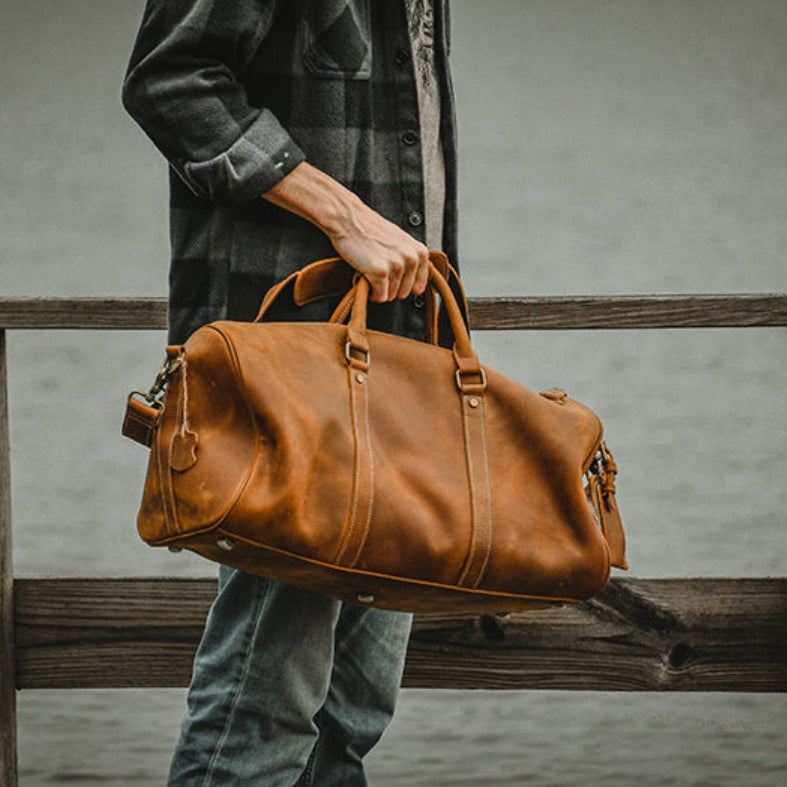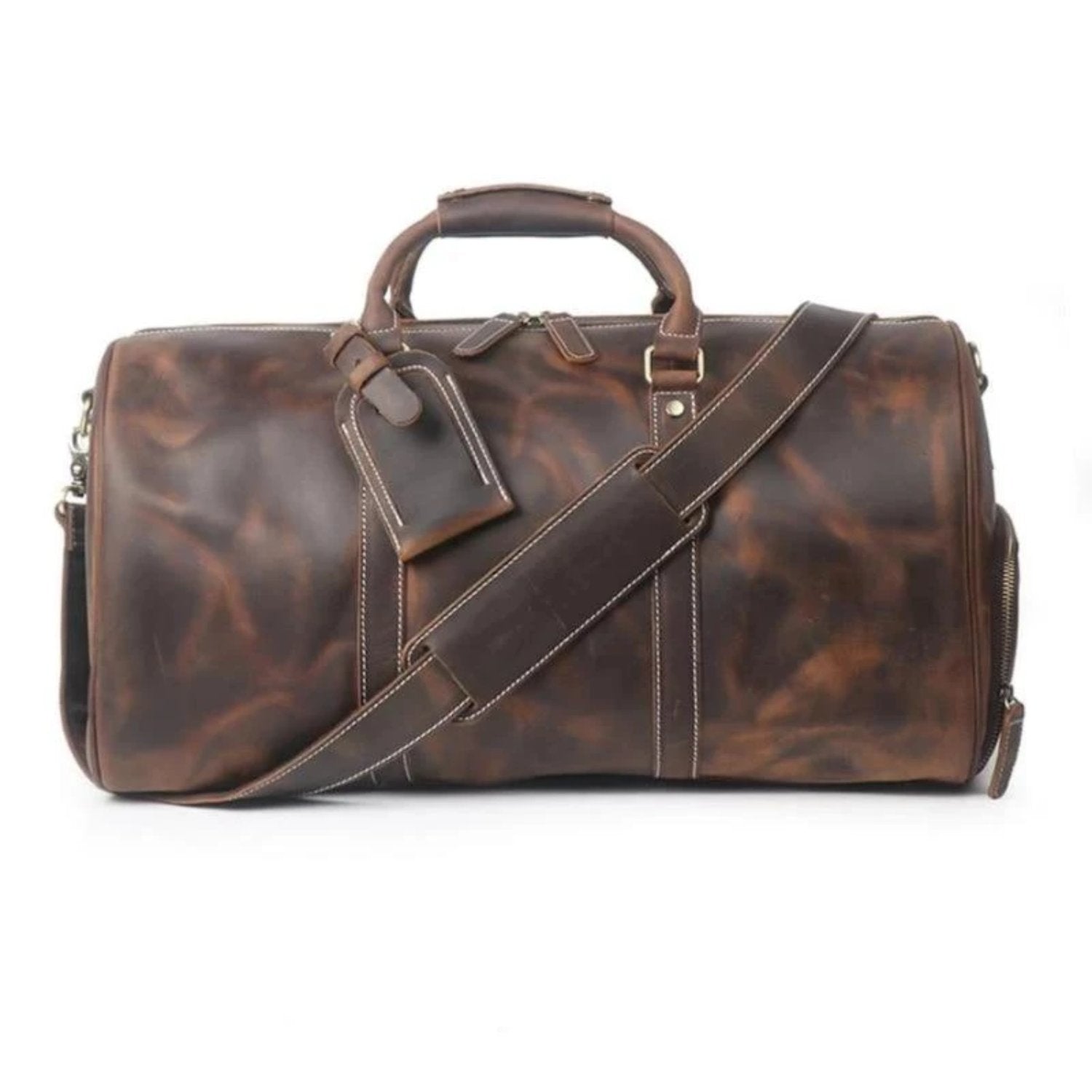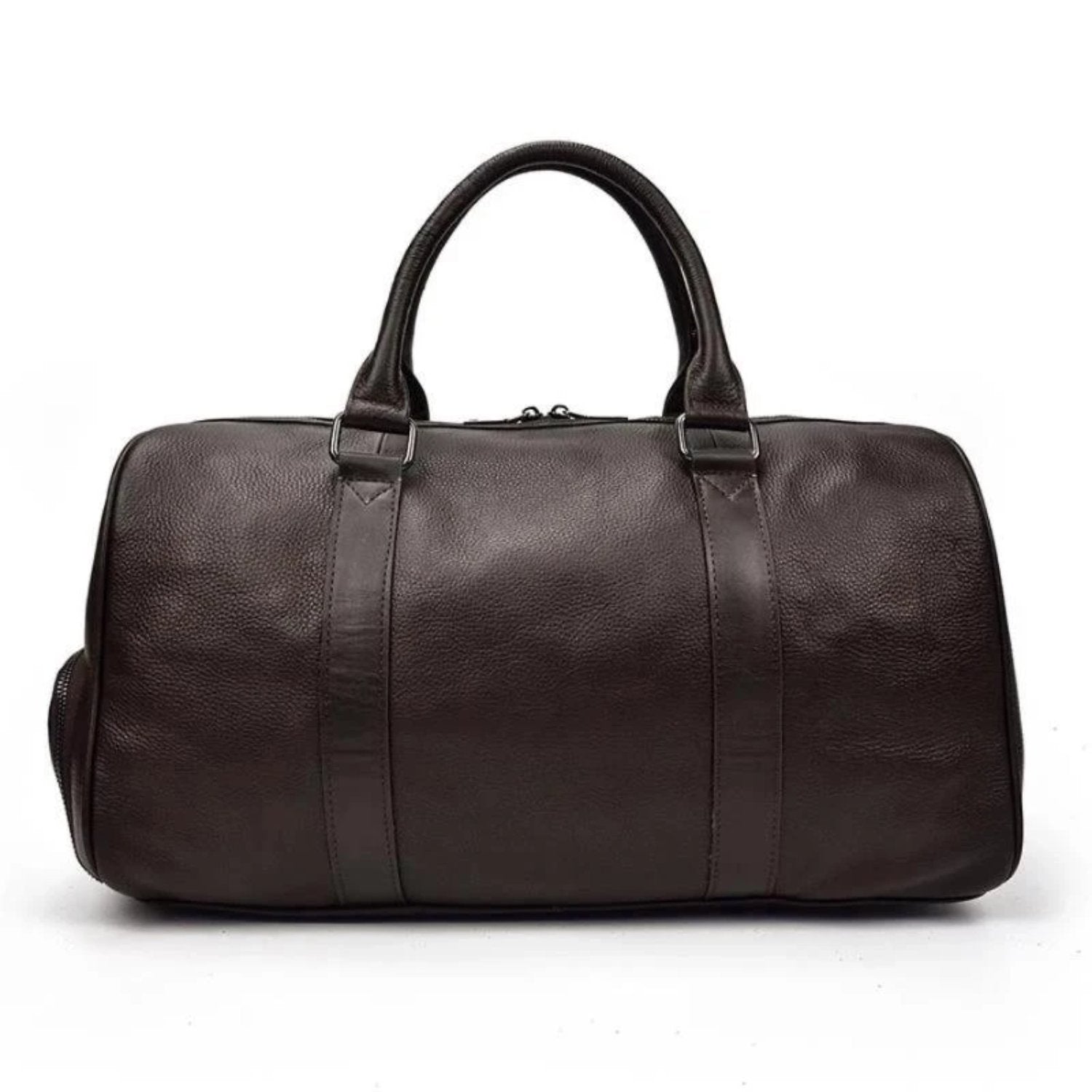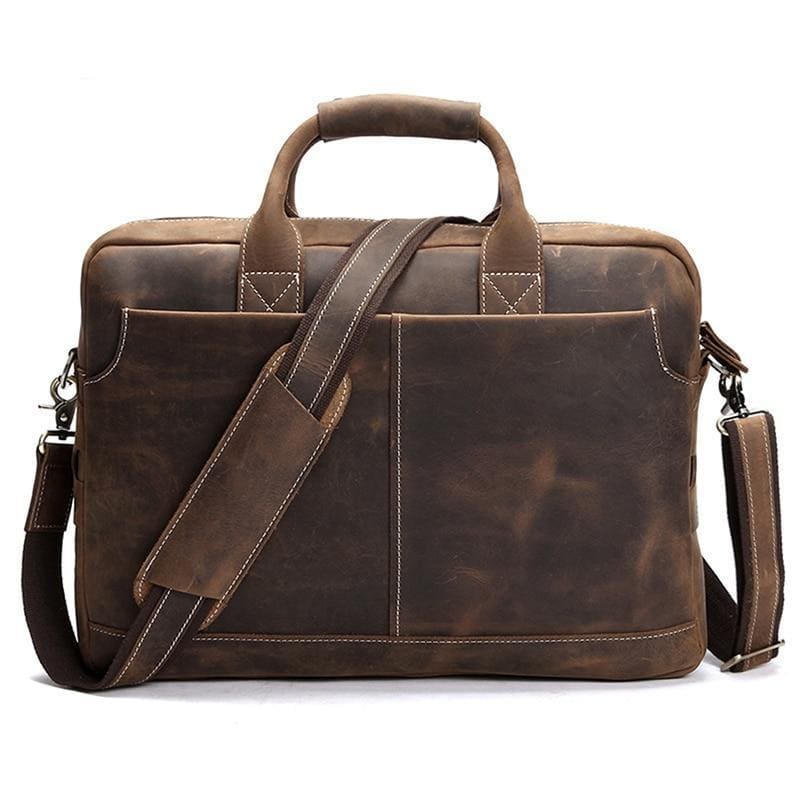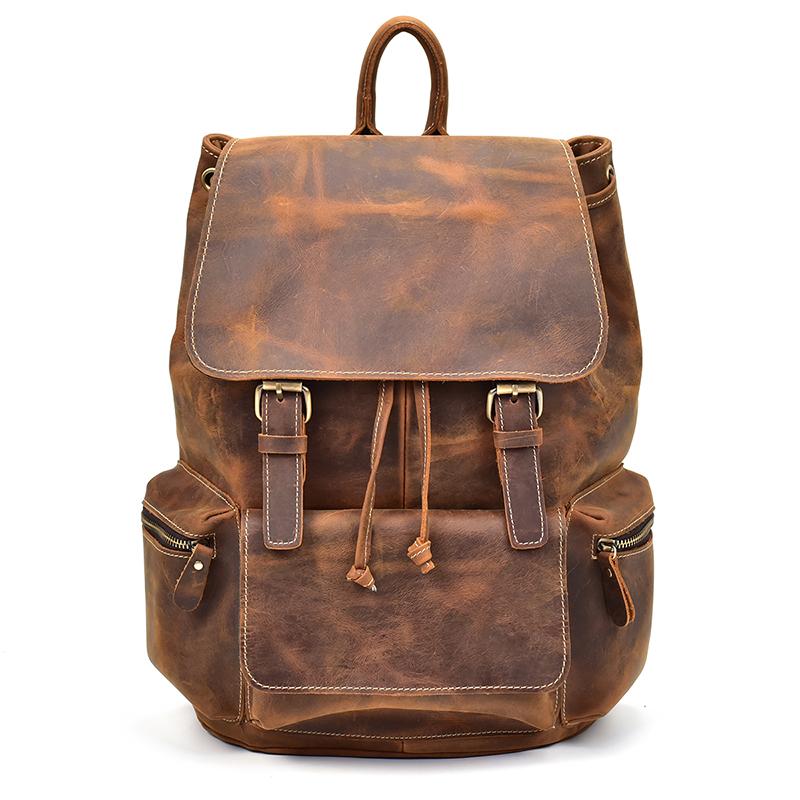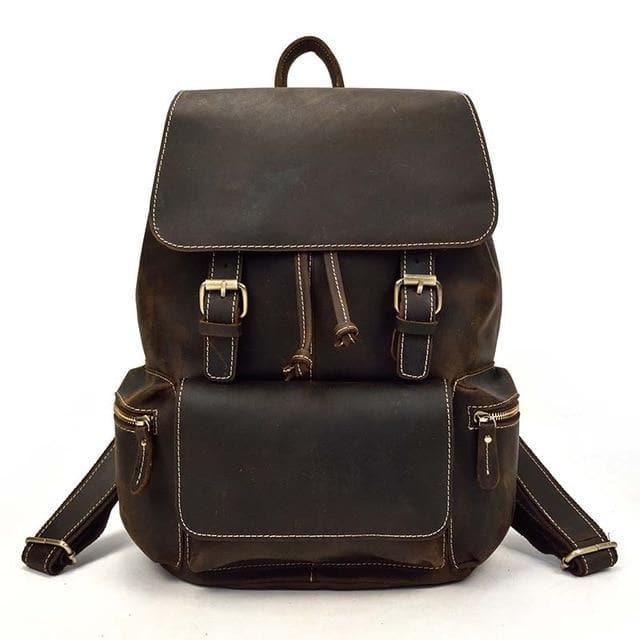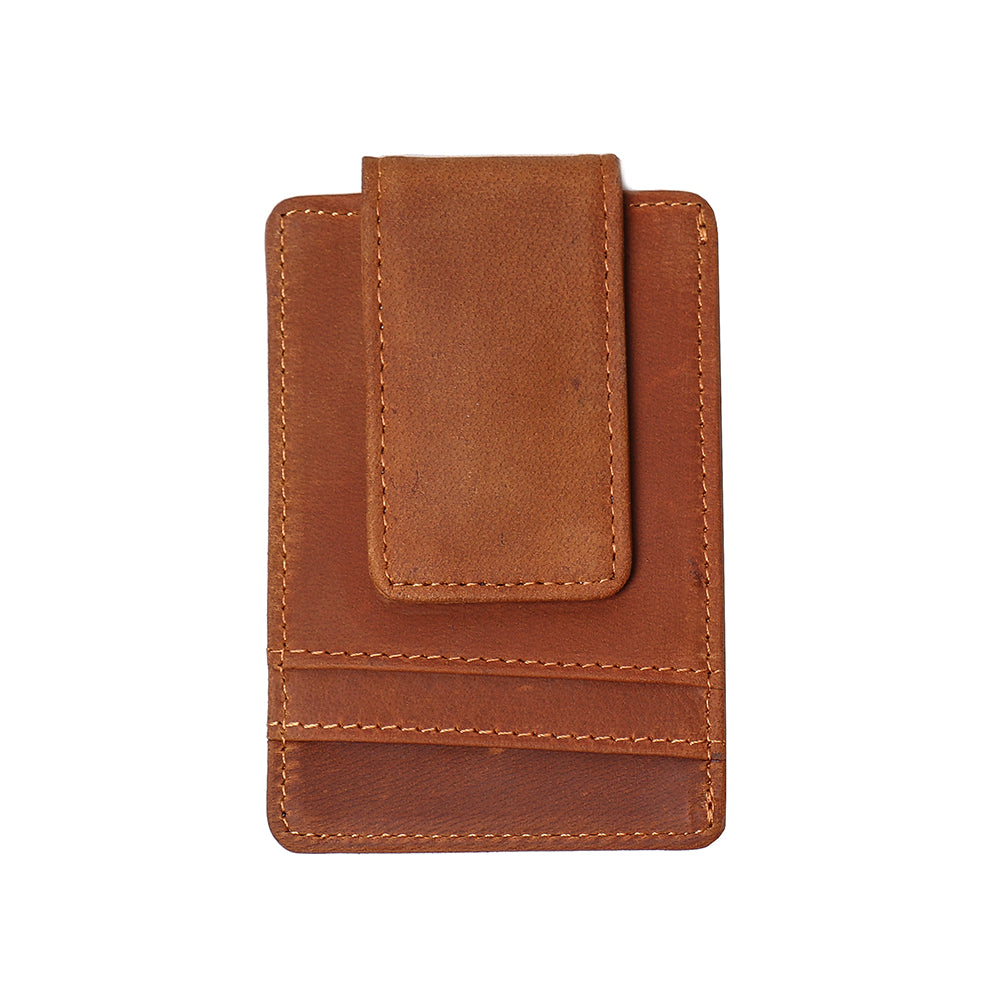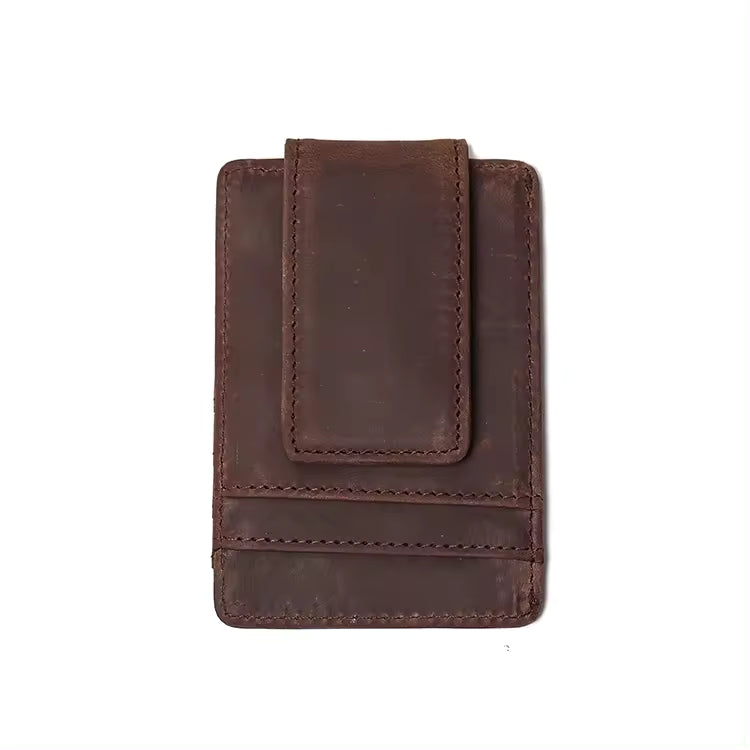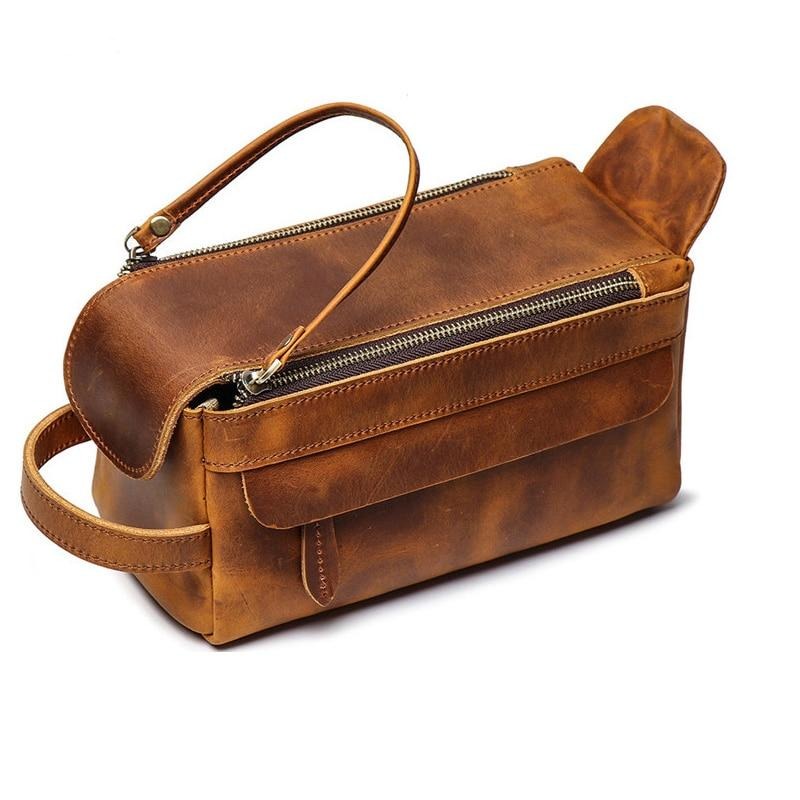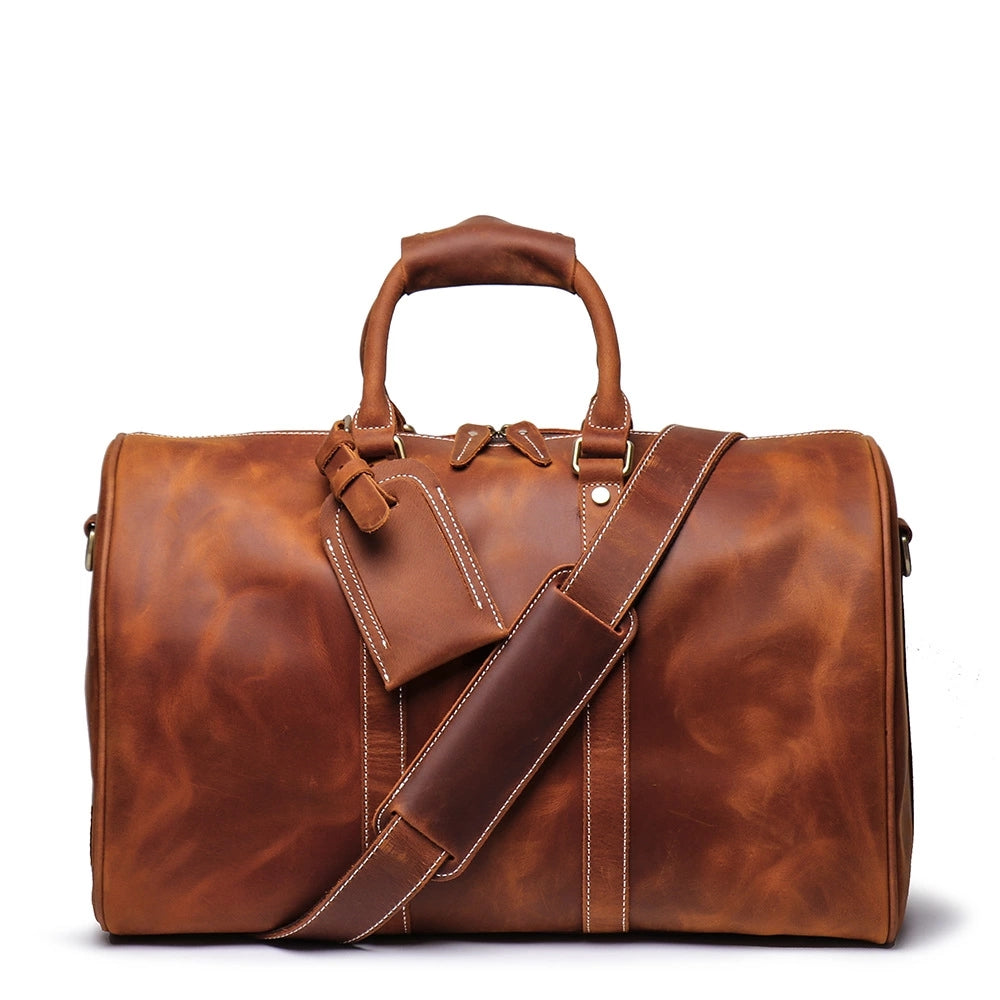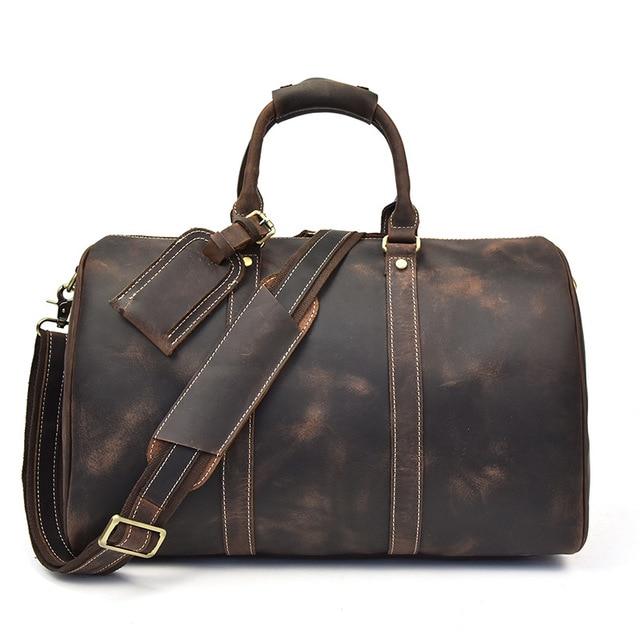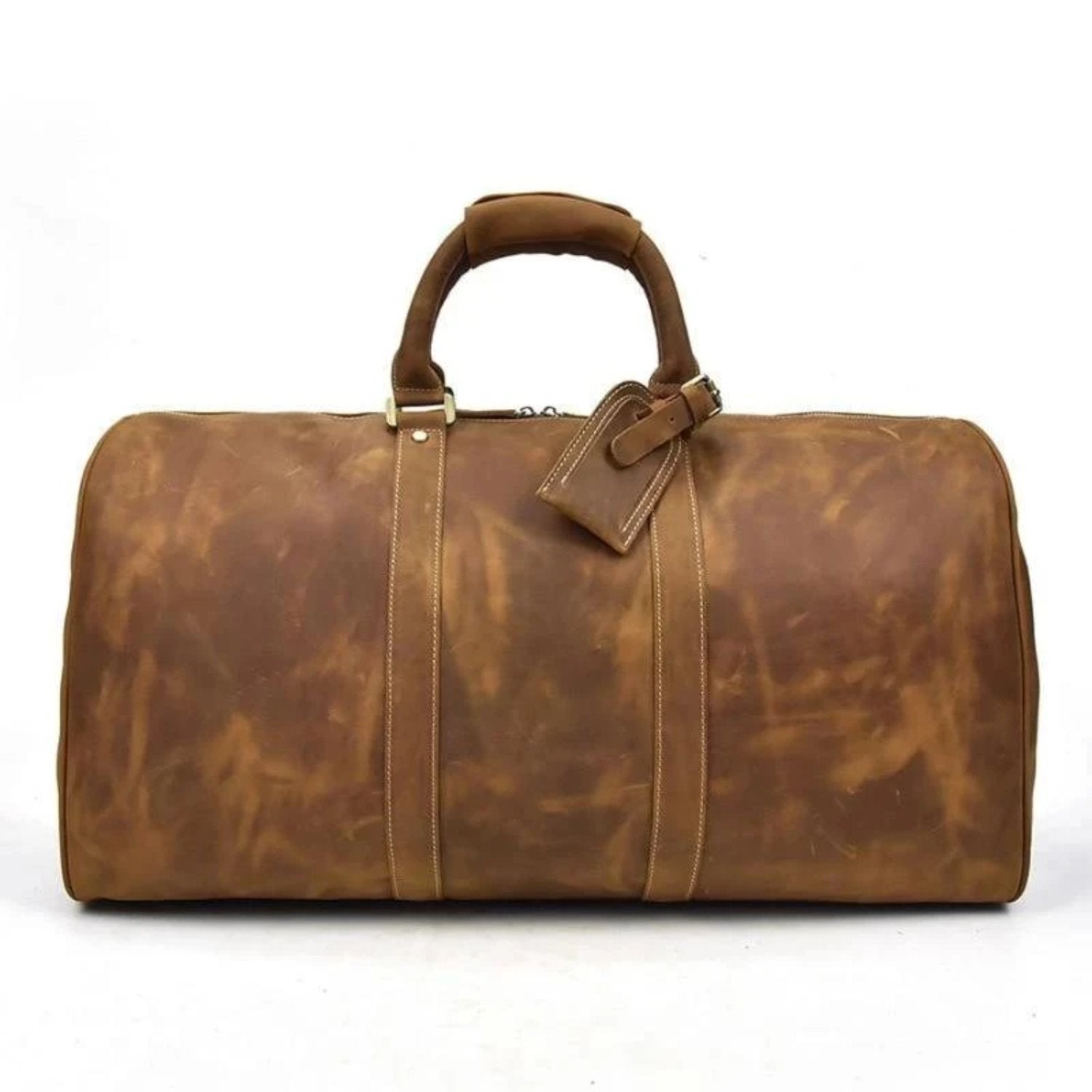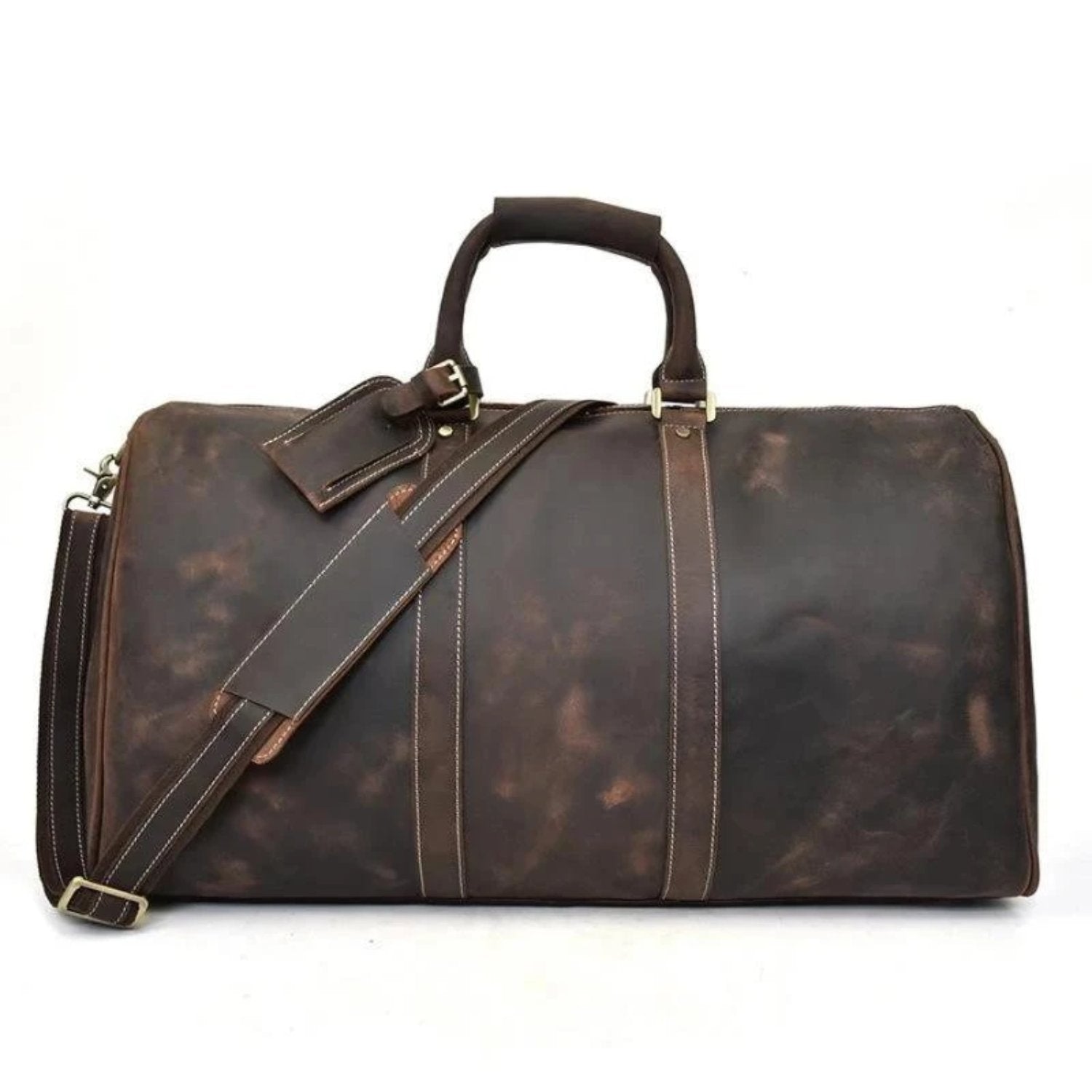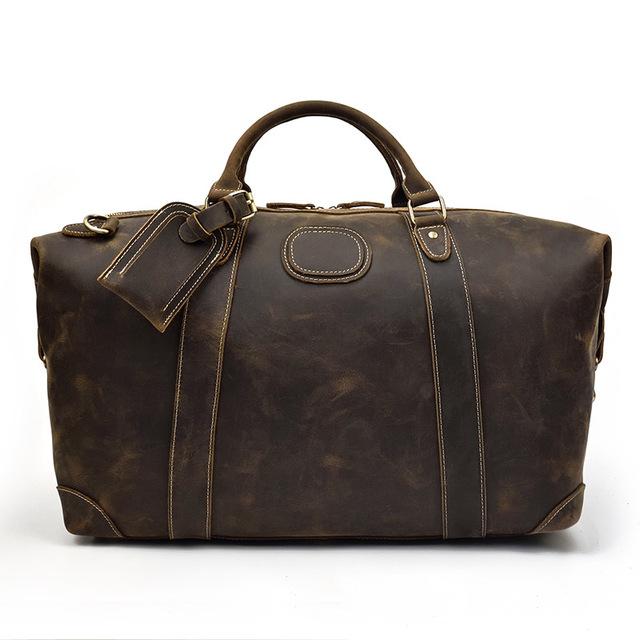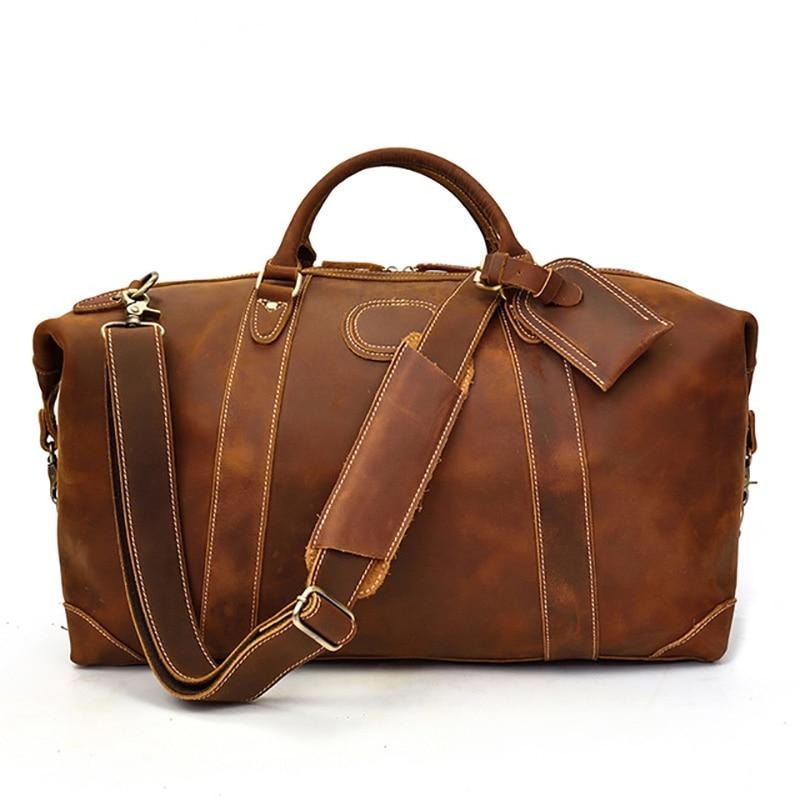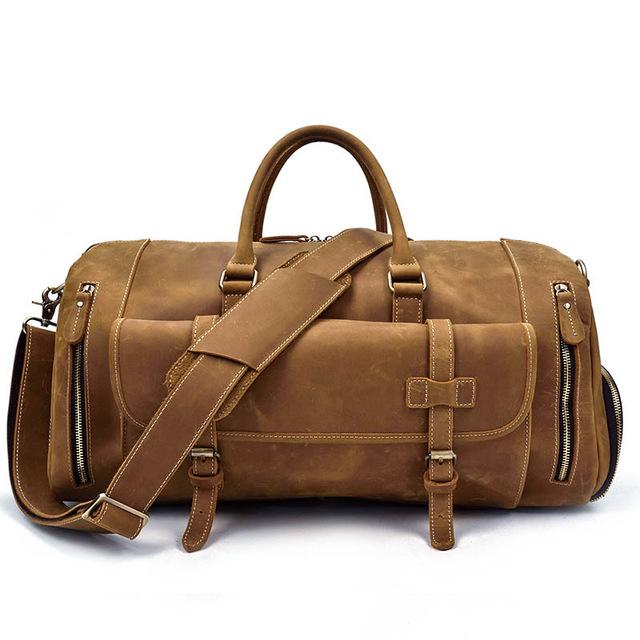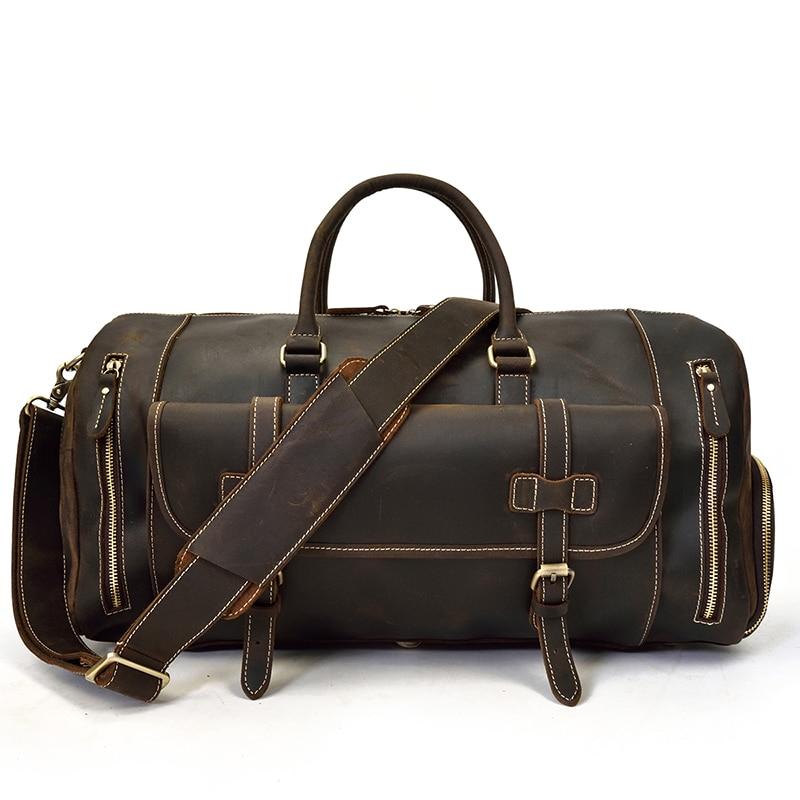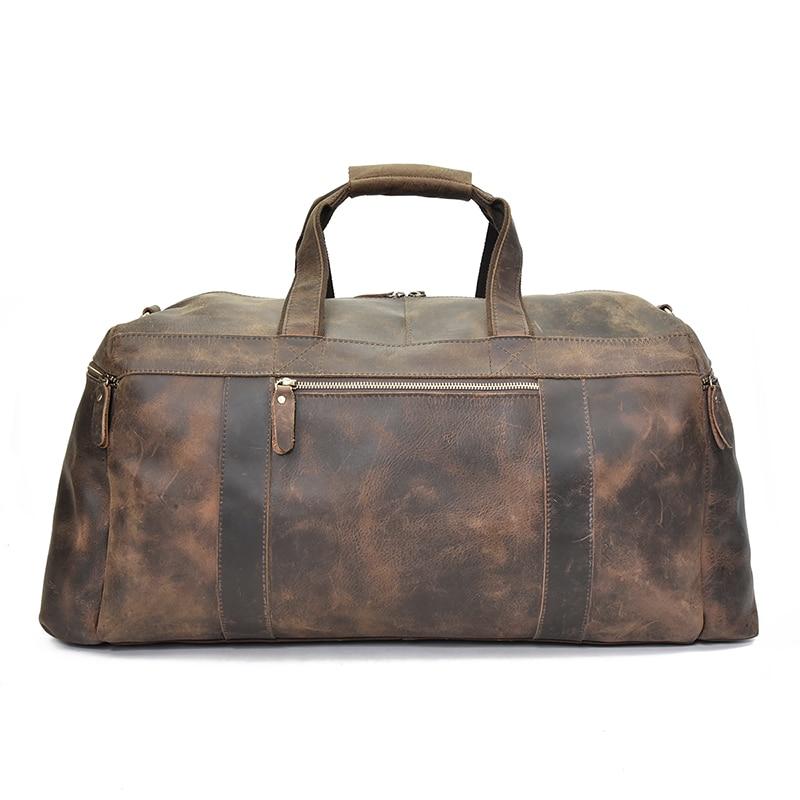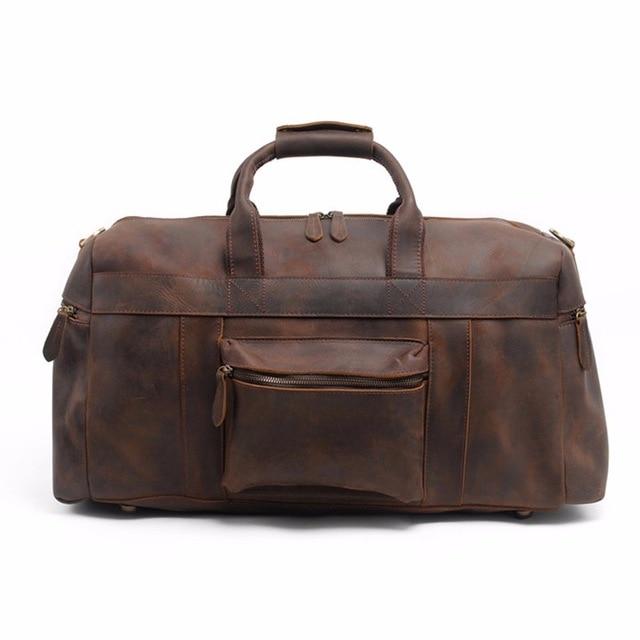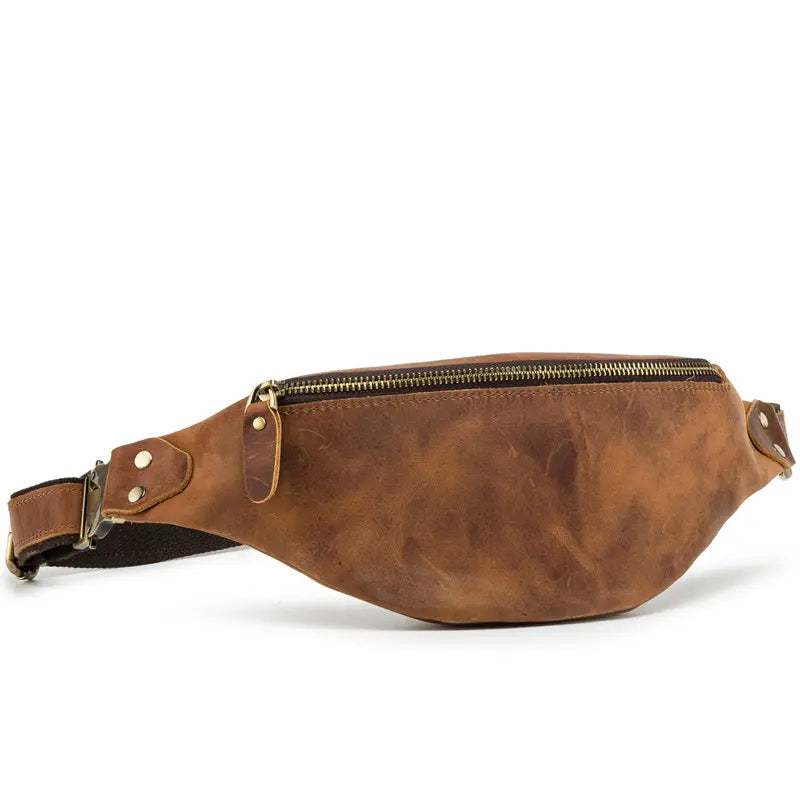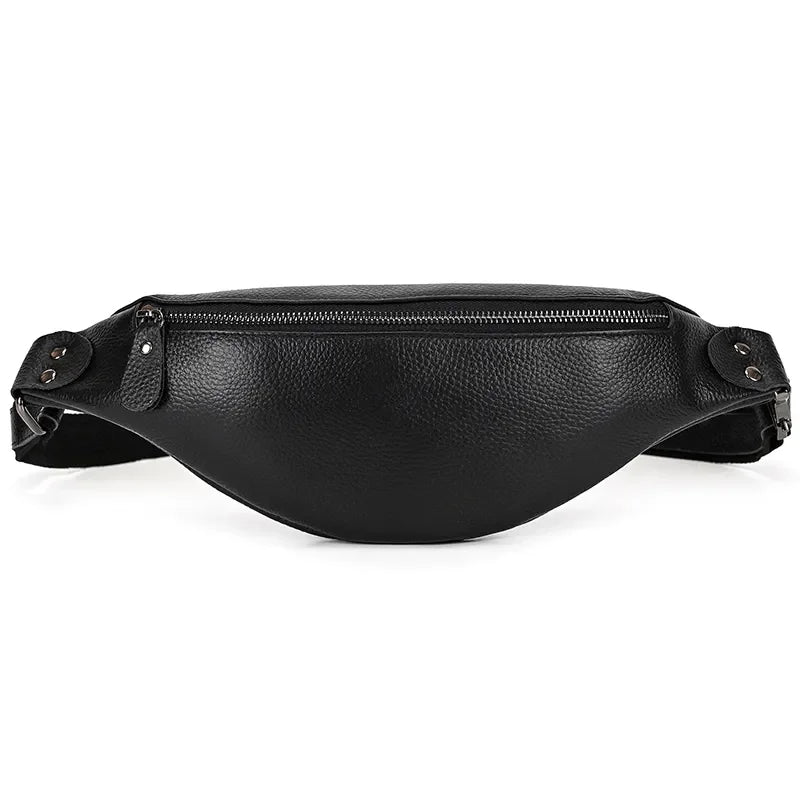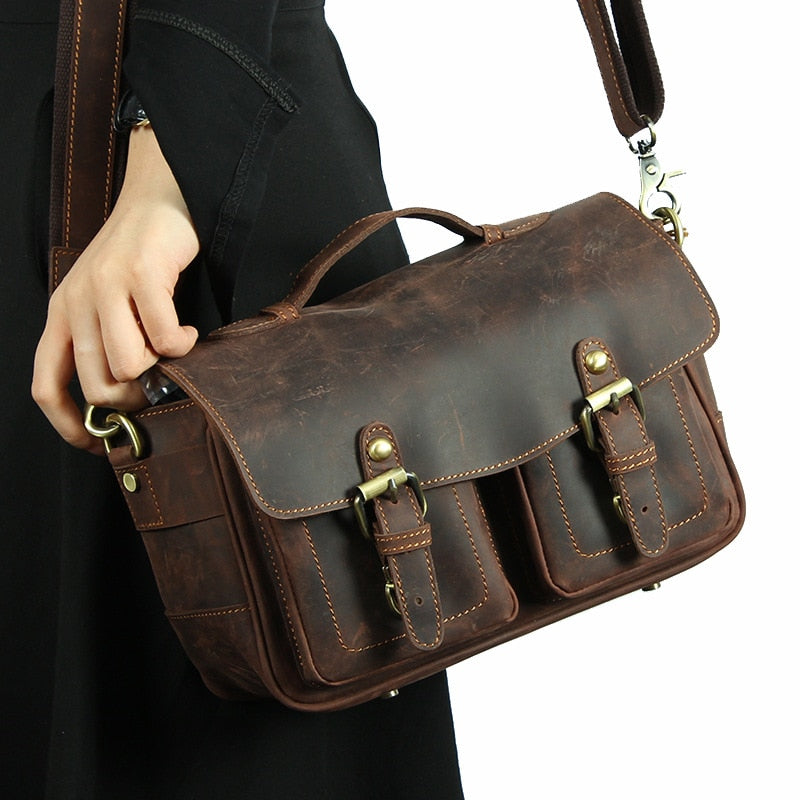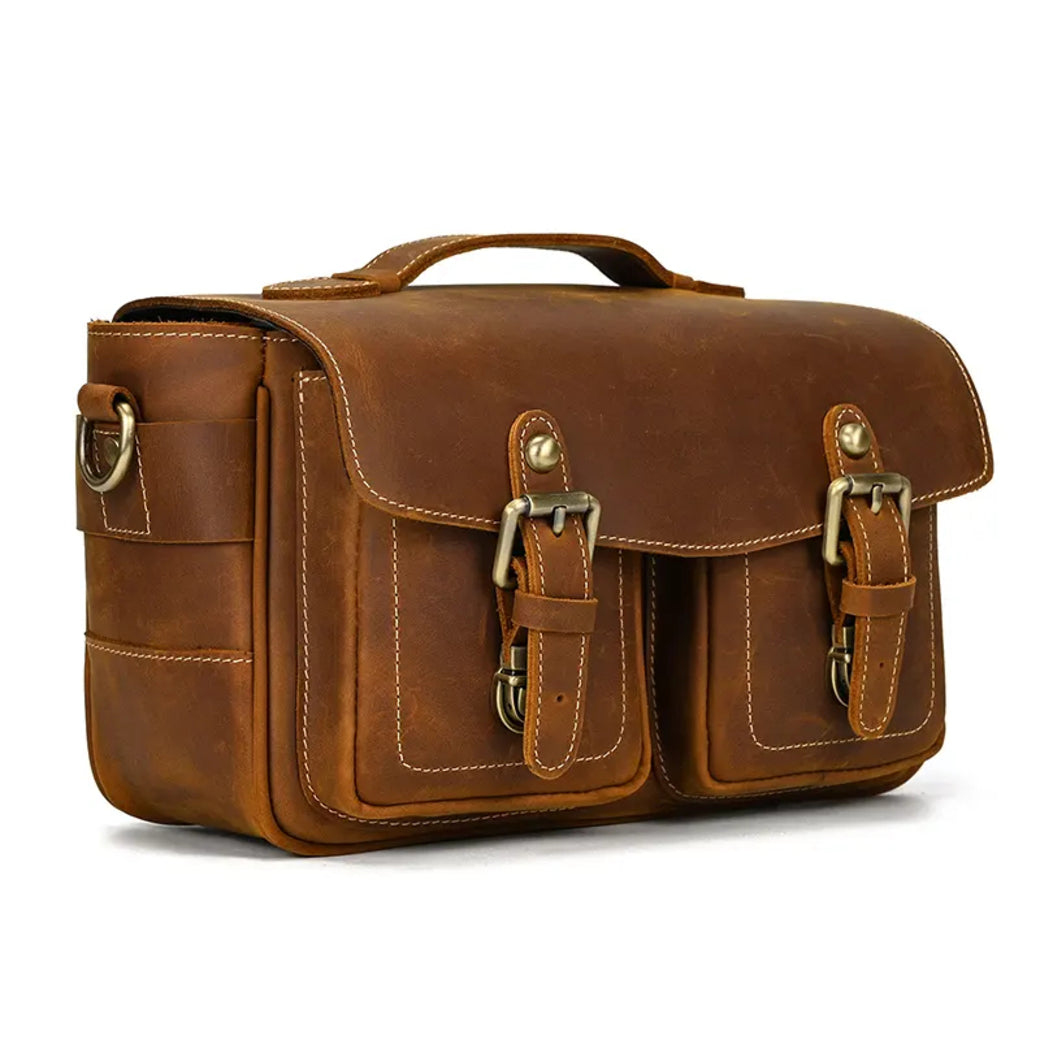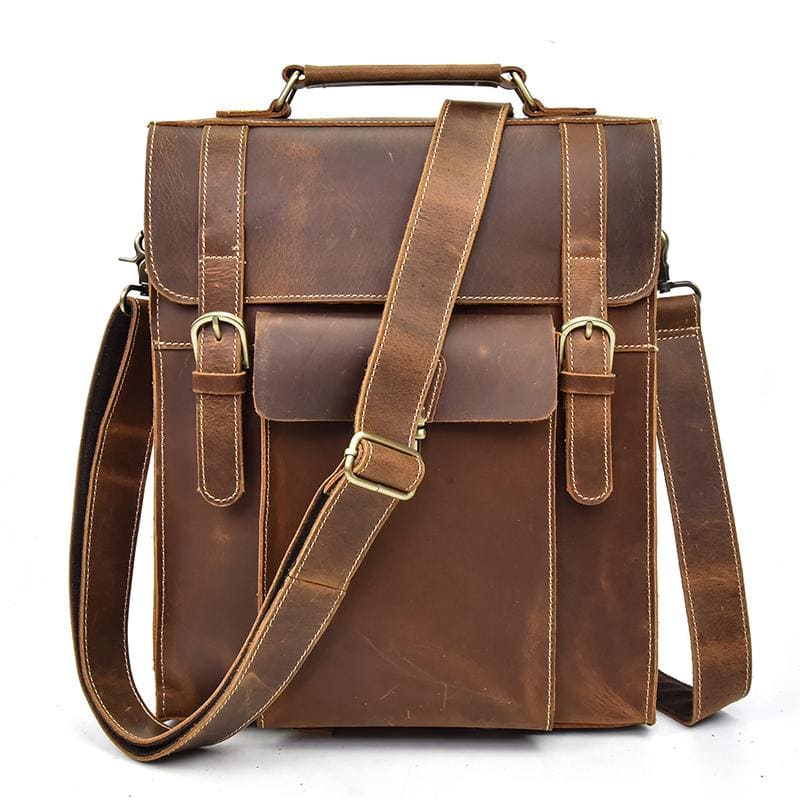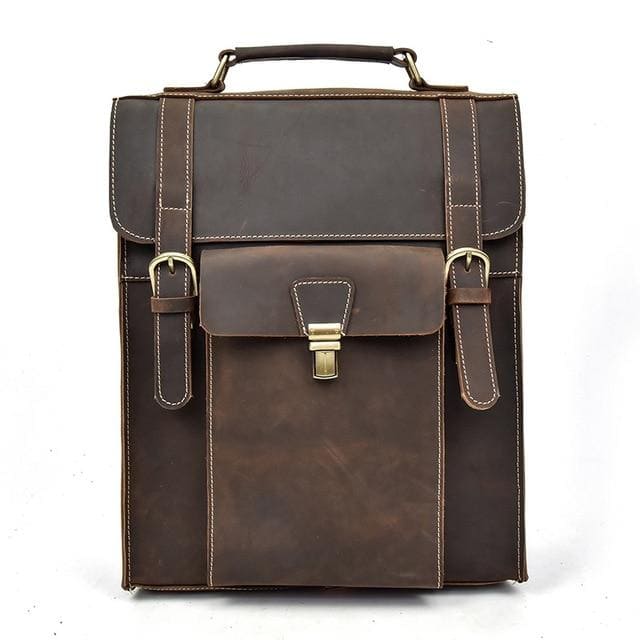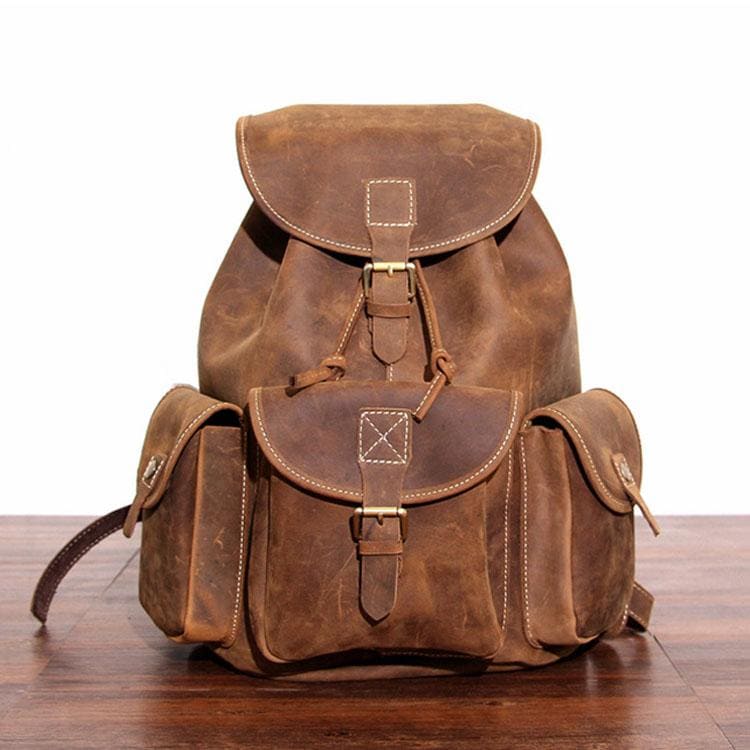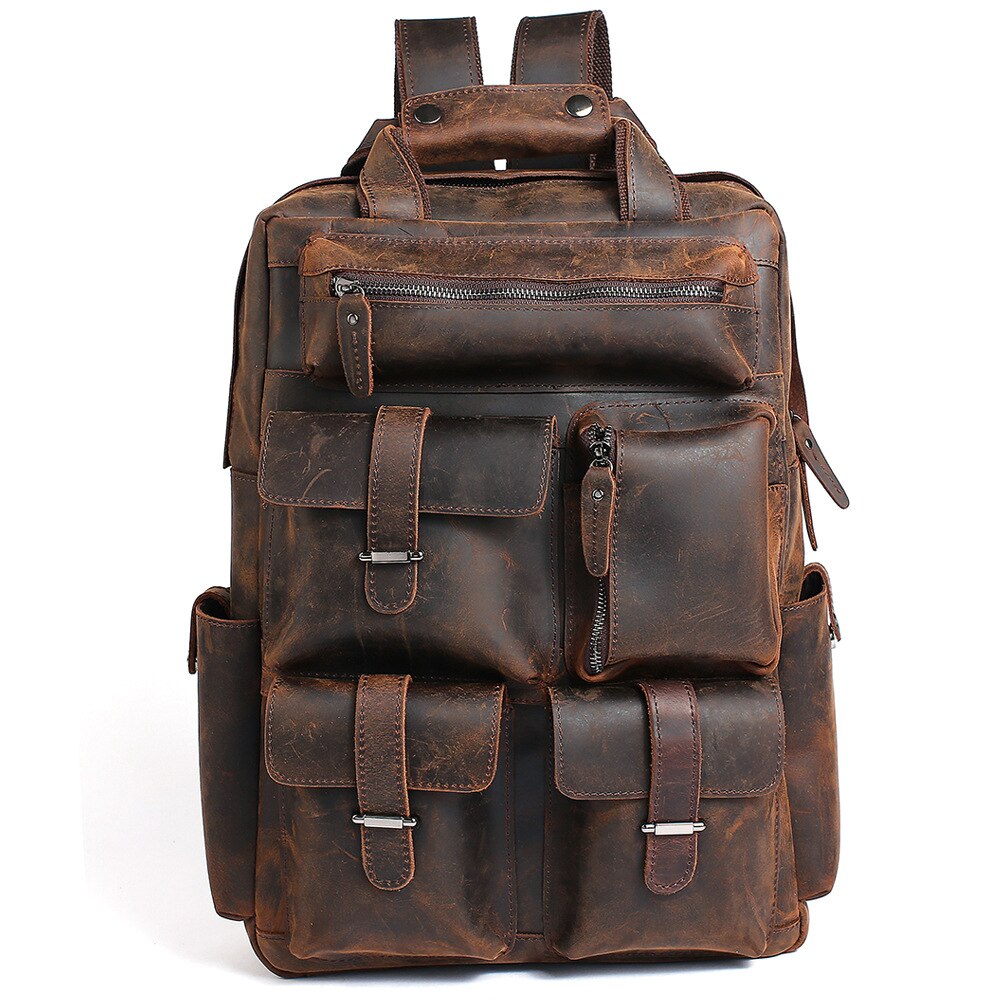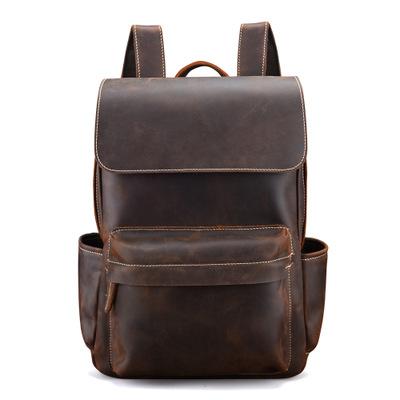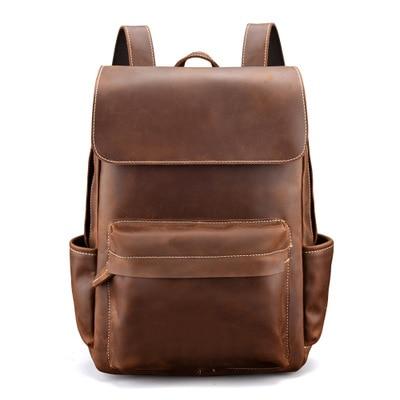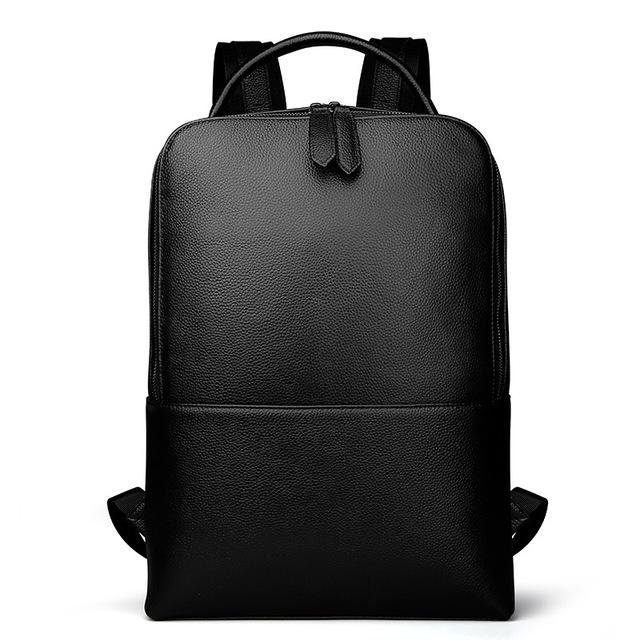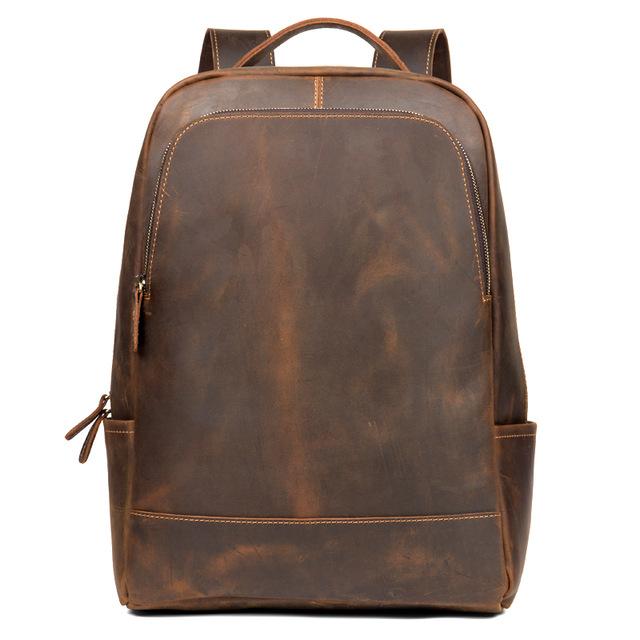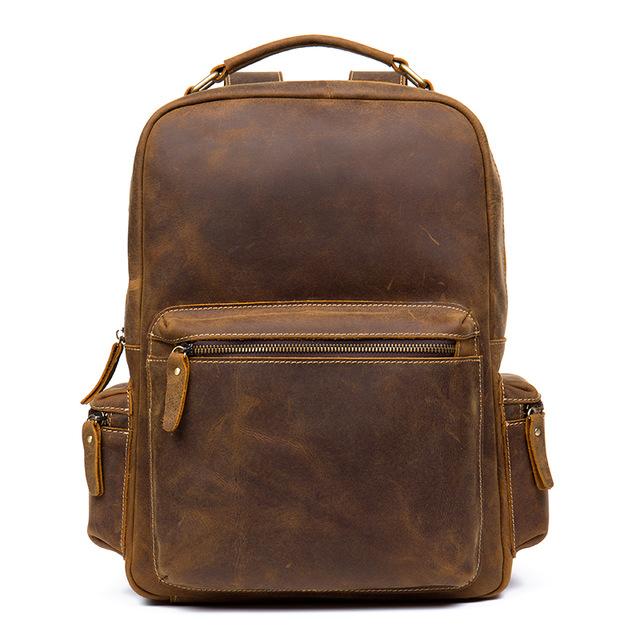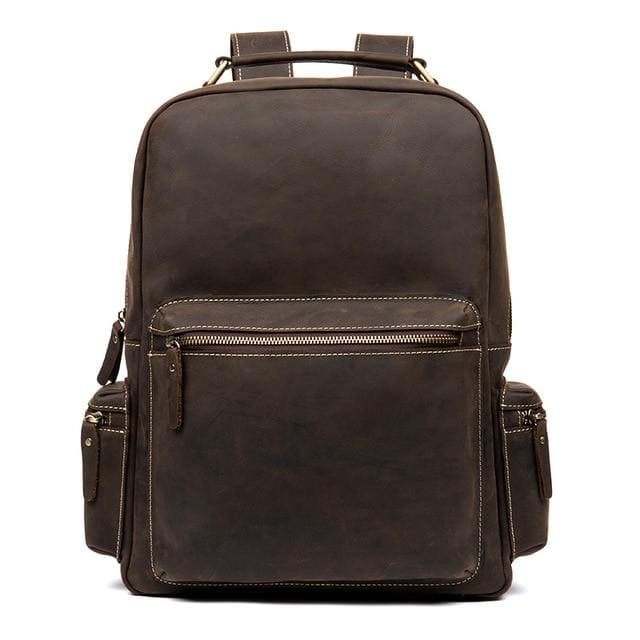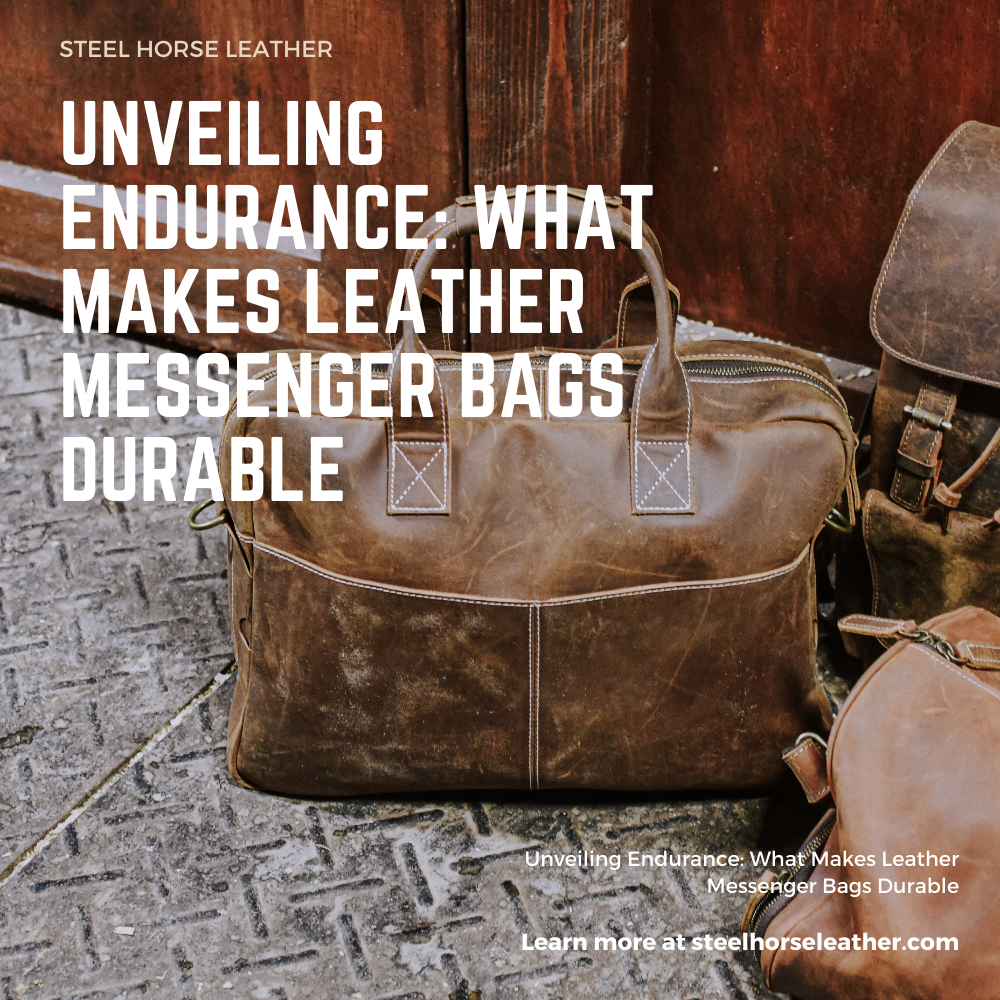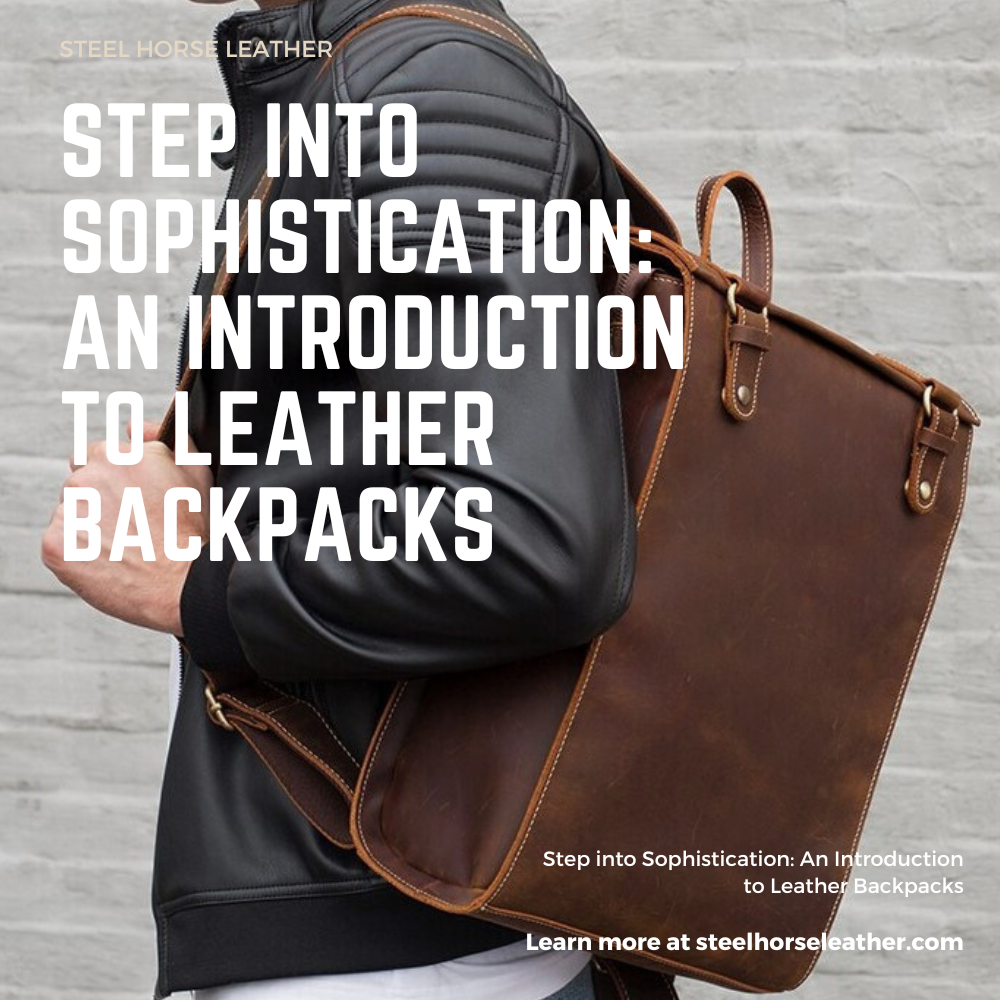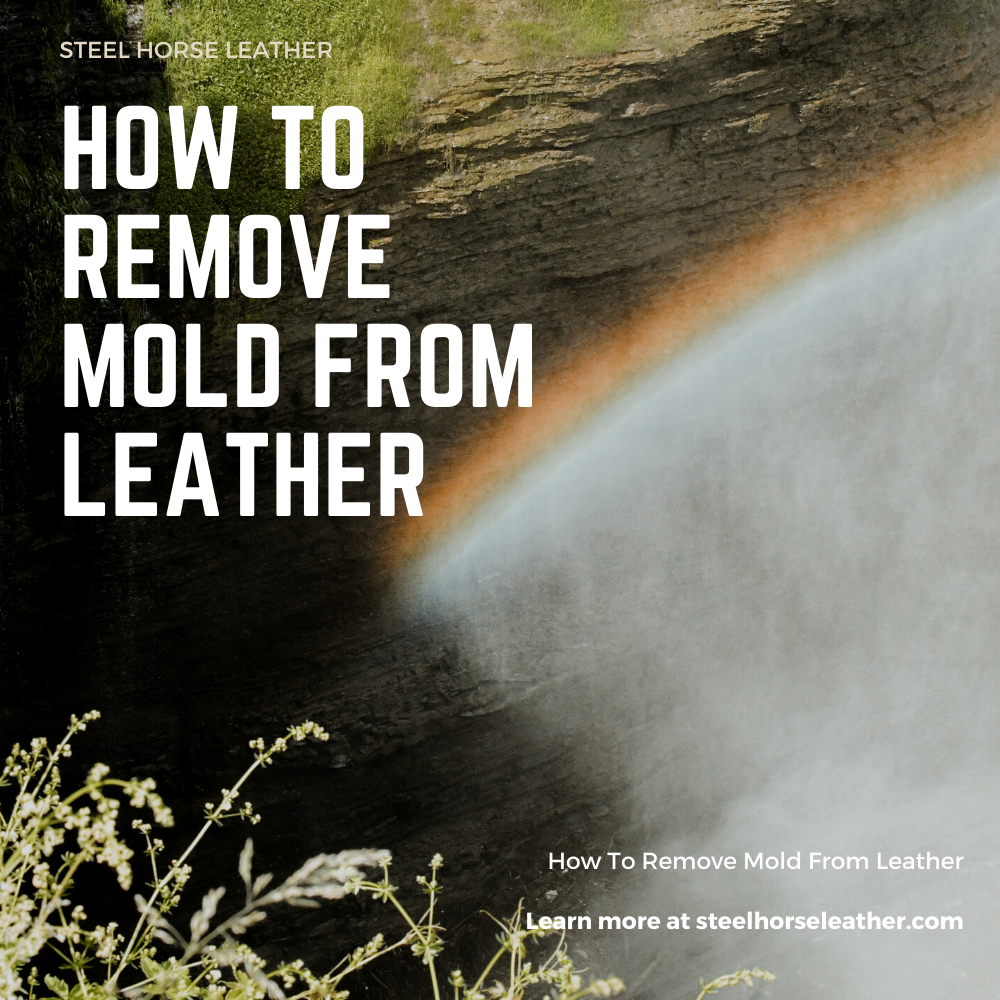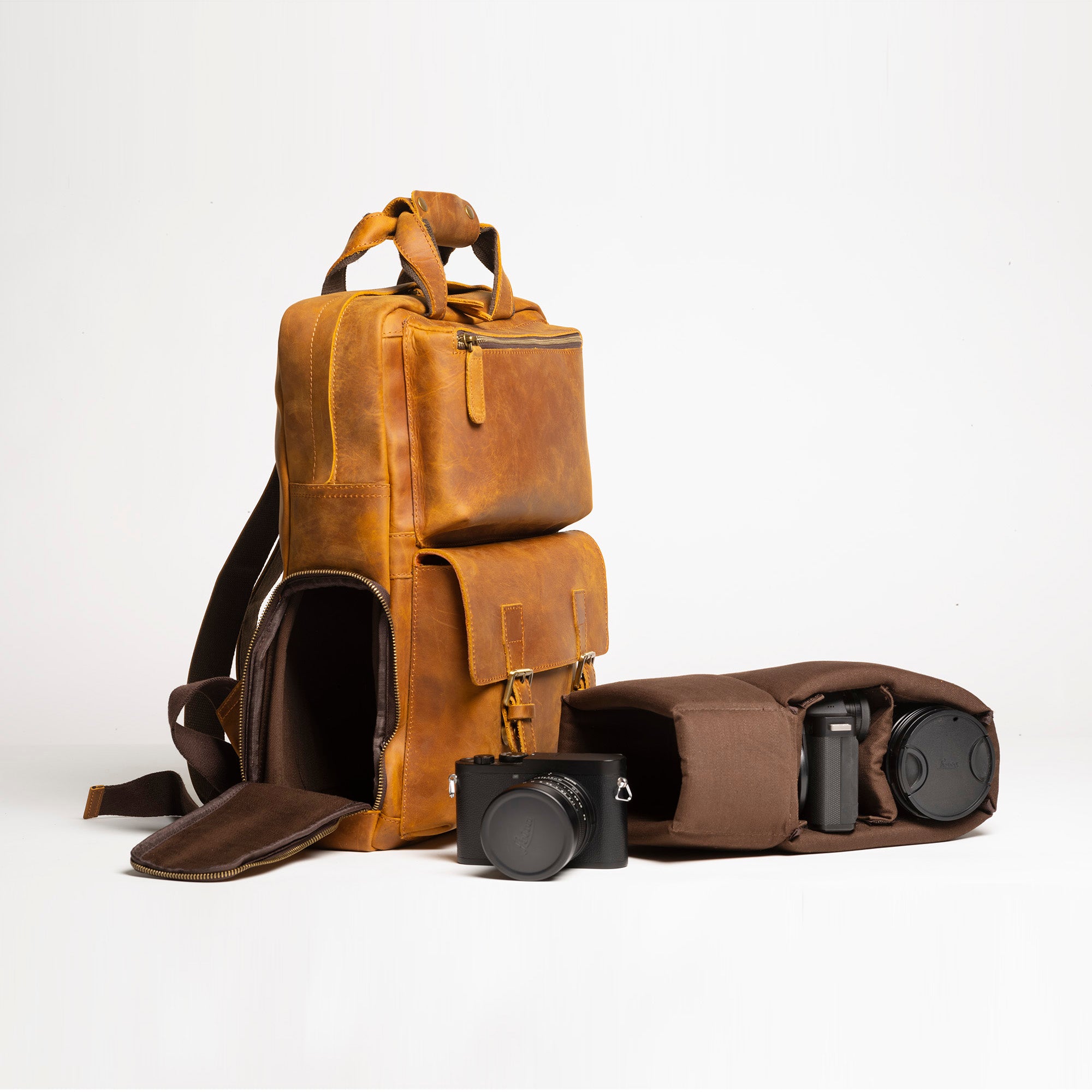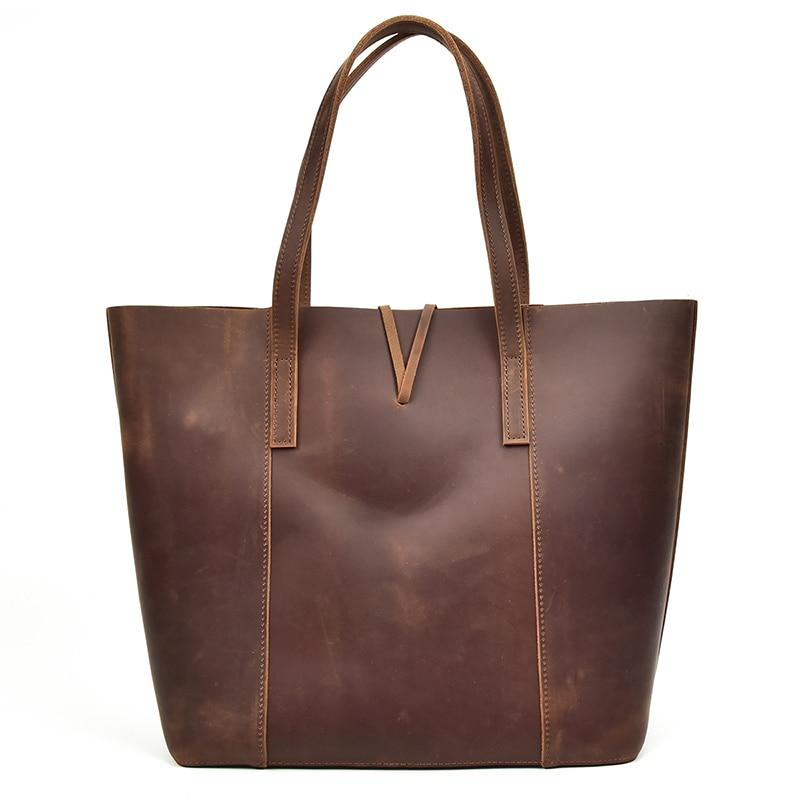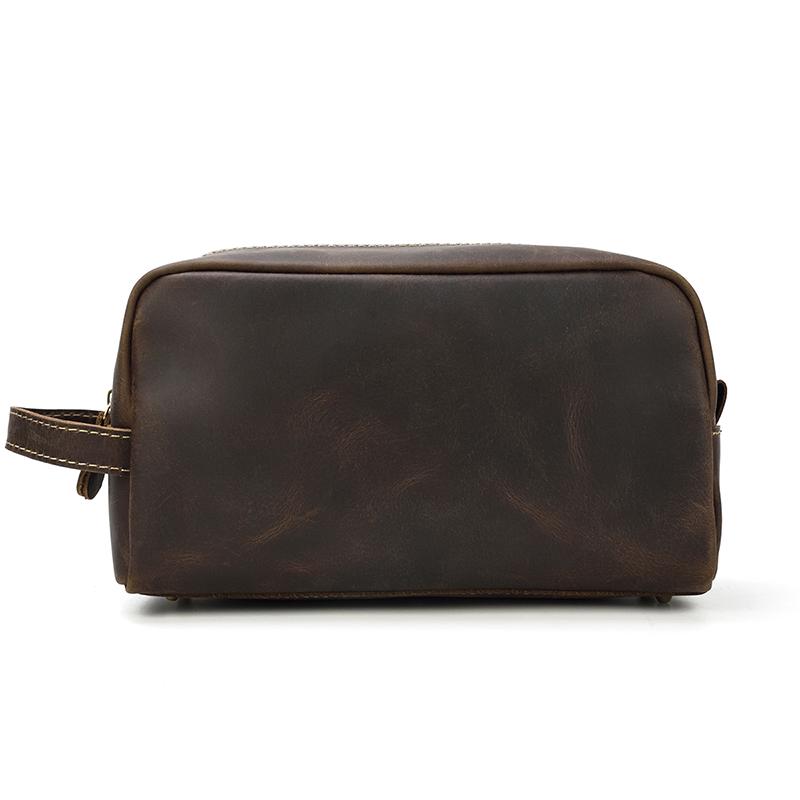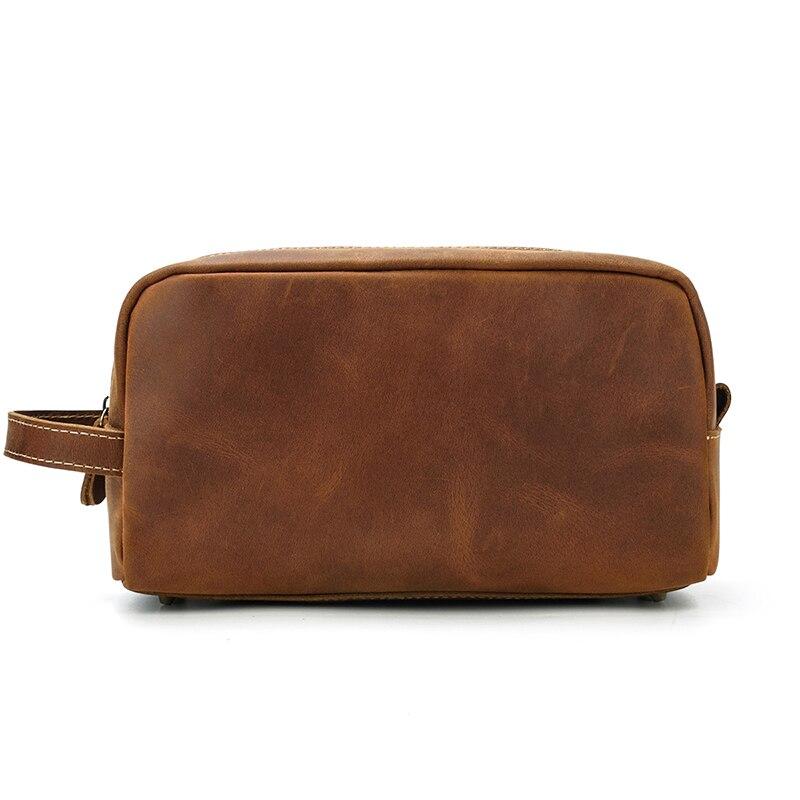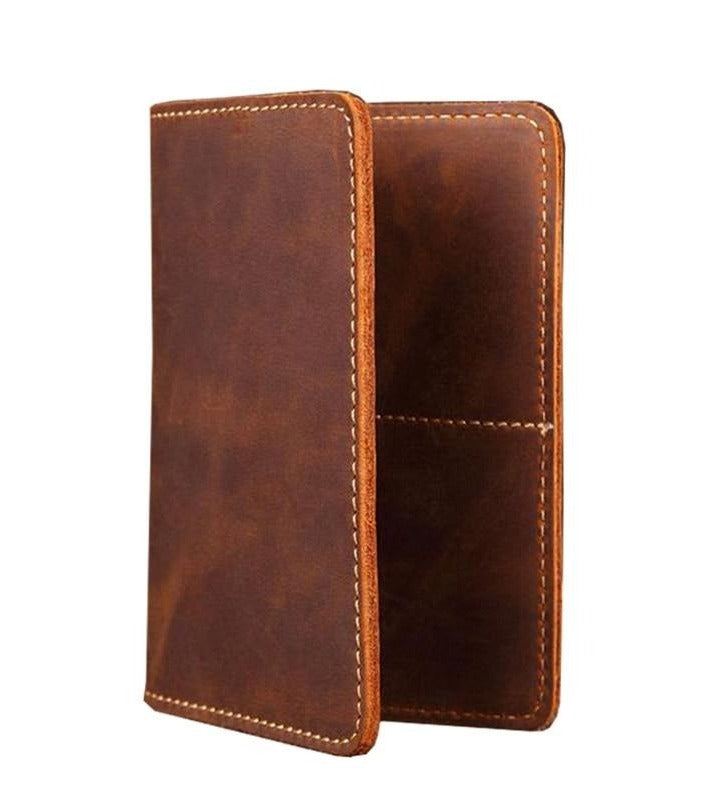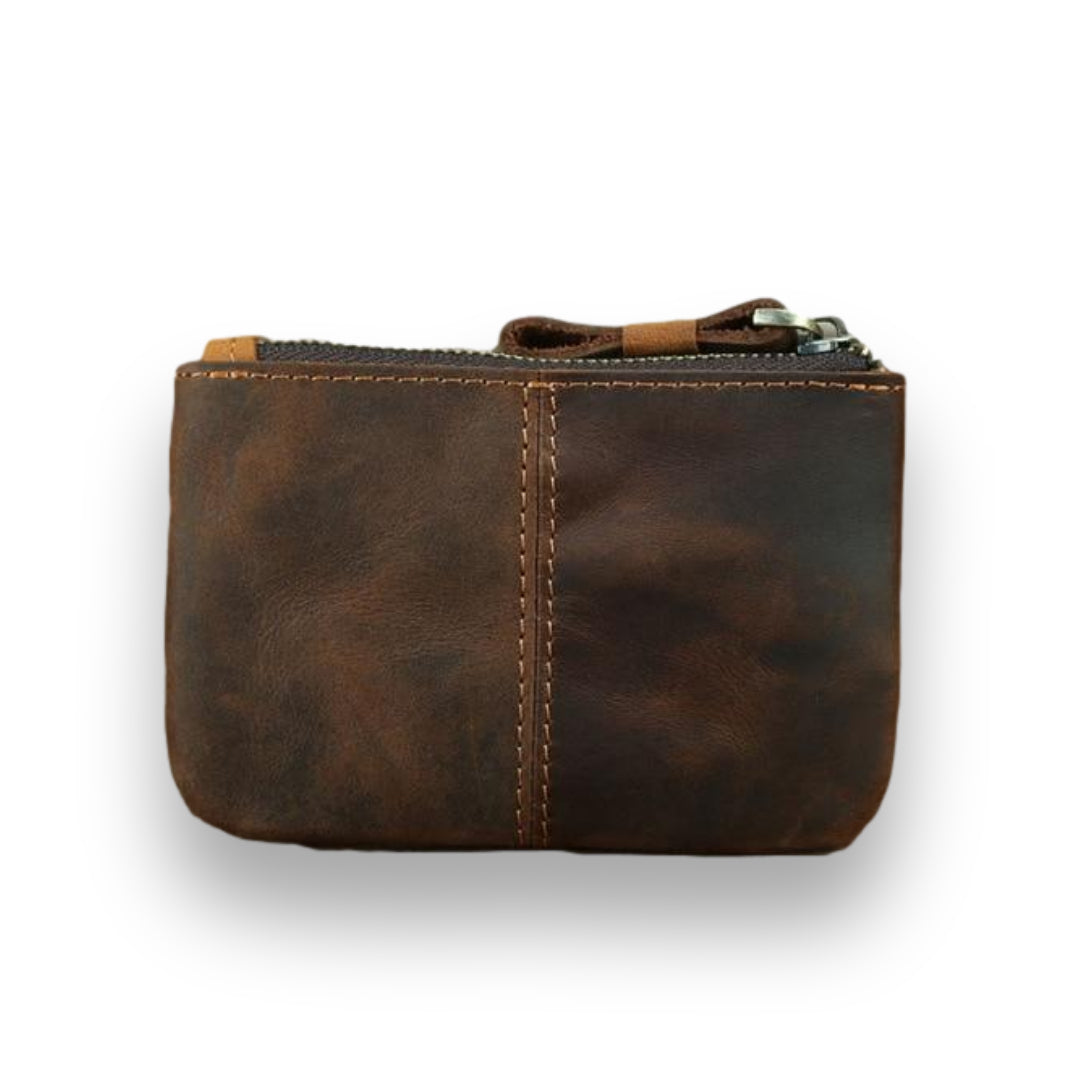You might think caring for your leather backpack is a daunting task. But, it's easier than you'd imagine. Knowing the type of leather and understanding proper cleaning techniques can keep your bag looking new for years.
This article will guide you through pre-cleaning preparation, and various cleaning methods, and even suggest suitable backpacks for photographers. Embrace the art of leather maintenance and enjoy the freedom that comes with a well-preserved backpack.
Key Takeaways
-
Know your leather type: Different leathers (natural vs. synthetic, full-grain vs. top-grain) require specific care methods—understanding what your backpack is made of is the first step to proper maintenance.
-
Preventative care matters: Regular maintenance prevents leather from drying out, cracking, or staining, with experts recommending thorough cleaning approximately every three months.
-
Use appropriate cleaning methods: Always match your cleaning technique to the specific type of stain or damage, using gentle products designed for leather care.
-
Environmental factors affect maintenance needs: Climate, humidity, and temperature all influence how often you need to condition and protect your leather backpack.
-
The right supplies make a difference: Invest in proper leather cleaning solutions, conditioners, and soft cloths to ensure effective and safe maintenance of your leather backpack.
Why Trust Our Leather Expertise
At Steel Horse Leather, our dedication to the craft of leathermaking spans generations. Our master artisans have dedicated their lives to perfecting the art of leather craftsmanship, giving us unparalleled insights into proper leather care and maintenance. This expertise isn't just theoretical—it's born from our hands-on experience selecting, treating, and crafting premium leather goods daily.
We take a holistic approach to understanding leather, from sourcing raw materials to finishing the final product. Our obsessive attention to leather quality means we've developed specialized knowledge about different leather types and their unique care requirements. When we recommend cleaning and conditioning methods, we do so based on extensive experience with how various leathers respond to different treatments, environments, and levels of use. Our artisans' deep understanding of leather's natural properties allows us to provide care advice that preserves both the aesthetic appeal and structural integrity of your leather backpack.
What is a Leather Backpack?

You know your leather backpack isn't just a bag, it's an investment. Proper care and maintenance are crucial because it ensures the durability of this premium item, allowing it to age gracefully over the years.
Understanding the different types of leather and the specific care they require can significantly improve the longevity of your backpack, and we're here to guide you through detailed instructions for each.
Why Proper Care and Maintenance is Important
Proper care and maintenance are vital for your leather backpack because it extends its lifespan and keeps it looking new. The importance of longevity can't be overstated.
With regular maintenance, the benefits are numerous. It prevents the leather from drying out, cracking, or staining, thereby preserving its durability.
Care frequency depends on usage and environment, but generally, a thorough clean every three months is recommended. This not only keeps your backpack looking its best but also serves as an investment protection.
Maintaining your leather backpack is a small price to pay for the freedom it offers, complementing your lifestyle with its timeless elegance. With the right care, your backpack will last for years, even decades. Now, let's delve into the various types of leather and how their care differs.
Types of Leather
As you delve deeper into the world of leather, you'll find that there's a great deal more to it than you might initially think.
It's important to understand the distinctions between natural and synthetic leather, as well as the different types of natural leathers, as this can greatly impact the look, feel, and longevity of your leather items.
From full grain to top grain and bonded leather, each type has its unique characteristics and care requirements that you need to be aware of.
Natural vs Synthetic Leather
Understanding the difference between natural and synthetic leather can significantly impact your backpack's care and maintenance routine.
Natural leather boasts a durability that's hard to beat, with a unique patina that only gets better with age. However, it requires more care and is typically more expensive.
Synthetic leather, on the other hand, offers certain benefits such as resistance to water and scratch, making maintenance a breeze. It's also more wallet-friendly, which may suit your budget better.
However, it's important to consider the environmental impact. Synthetic leather is often petroleum-based, which isn't eco-friendly. Meanwhile, natural leather is a by-product of the meat industry. Your fashion preferences and ethical stance will greatly influence your choice.
Now, let's delve into the different types of natural leather to give you a more comprehensive understanding.
Different Types of Natural Leathers
When it comes to natural leathers, there's a variety of types to consider, each with its own unique characteristics and benefits. Leather sourcing plays a significant role in the overall quality, durability, and aesthetics of the finished product.
The most common type is full-grain leather, which is highly durable and sought after for its rich, luxurious look. It's sourced from the top layer of the animal hide and undergoes minimal processing during the tanning process, thus retaining its natural imperfections and unique texture.
Another type is top-grain leather, which is slightly less durable but still offers an elegant aesthetic. It's more resistant to stains due to its finishing process, which also reduces the leather's environmental impact.
Before diving into the cleaning process, it's essential to understand your backpack's leather type to ensure appropriate care.
Pre-Cleaning Preparation
Before you dive into cleaning your leather backpack, there are some pivotal steps you should take to ensure a successful and safe process.
First, it's crucial to understand the factors that come into play before cleaning begins, such as the type of leather and the level of grime or damage.
Second, you'll need to gather the necessary supplies geared towards effective yet gentle cleaning and also assess the damage to your backpack to determine the right cleaning approach.
Lastly, don't forget to take safety precautions for both yourself and your backpack to ensure no harm comes during the cleaning process.
Things to Consider Before Cleaning
You'll need to weigh several factors prior to cleaning your leather backpack to prevent damage.
Firstly, consider the cleaning frequency - overcleaning can cause the leather to dry out and crack. Instead, aim for periodic cleaning based on usage to maintain the backpack's durability.
Secondly, stain prevention should be a priority. Be cautious about where you place your backpack and avoid exposing it to substances that could stain it.
Thirdly, proper backpack storage is crucial. Protect your bag from excessive heat and moisture by storing it in a cool, dry place. Occasionally, professional cleaning might be needed for deep stains or to enhance durability.
Finally, understanding these factors will guide you in making informed decisions on leather backpack care. Now, let's prepare the necessary items for an effective cleaning session.
Gathering Necessary Cleaning Supplies
It's crucial to have the right cleaning supplies at your disposal to ensure a successful cleaning session. Supply selection is the first step toward giving your leather backpack the TLC it deserves.
Start with a high-quality cleaning solution specifically designed for leather. These solutions are typically pH balanced to ensure they won't damage the material. If you're conscious about the environment, there are plenty of eco-friendly products on the market that won't harm the ecosystem. Alternatively, you can whip up DIY mixtures using natural ingredients like vinegar and olive oil.
The tool's necessity includes a soft cloth for application and a gentle brush for stubborn dirt. Now that you're equipped with the right supplies, you're ready to examine the extent of the damage to your leather backpack.
Assessing the Damage to the Leather Backpack
Next, take a good look at your bag to determine how much cleaning it really needs. This damage evaluation will help you assess the extent of wear and tear, which is crucial for proper backpack maintenance.
Examine the leather for any scuffs, cracks, or scratches. These imperfections might require specific repair techniques, or even professional restoration, to bring the backpack back to its original state.
Remember, every bit of care you put into your bag is a step towards damage prevention, ultimately extending the backpack's lifespan. Understanding the nature of its damage is your first stride towards freedom from unnecessary replacements and costly repairs.
Before you get started, remember to consider some safety precautions. Not just for your sake, but also to protect the integrity of your leather backpack.
Taking Safety Precautions for Yourself and the Backpack
Taking the right precautions can save both you and your bag a whole lot of trouble down the line. When it comes to backpack safety, always ensure your leather backpack is secured from potential theft. Be mindful of your surroundings and never leave them unattended.
Leather's durability can be compromised when exposed to extreme weather conditions, so employ weatherproofing techniques to protect it. Use specialist leather protection sprays or creams to create a barrier against water and other elements.
As for you, invest in a backpack with ergonomic support to prevent back injuries. Comfortable, adjustable straps and a well-padded back will ensure you can carry your bag without strain. Next, we'll delve into the nitty-gritty of dealing with specific stains or damage.
Cleaning Methods Depending on Type of Stain/Damage
Now that you've prepared your leather backpack for cleaning, let's delve into specific cleaning methods based on different types of stains or damage. Light soiling or dusty conditions are common issues that can affect the lifespan and appearance of your bag. In the following section, we'll provide detailed and professional guidance on how to effectively handle these situations to ensure your leather backpack continues to look its best.
Light Soiling/Dusty Conditions
If your leather backpack has been exposed to light soiling or dusty conditions, it's important to clean it carefully to prevent any damage. Dusty environmental impact can be harmful, causing small scratches that affect the leather backpack's lifespan. Use a soft, dry cloth to gently wipe away the dust. For seasonal care differences, it's crucial to apply a leather conditioner in drier months to maintain its flexibility.
Soiling prevention tips include using a dust cover when not in use and avoiding placing your backpack on dirty surfaces. Some backpacks have dust-resistant features, which can provide additional protection. By adhering to these guidelines, you'll maintain your backpack's quality and longevity. Next, let's dive into the unique requirements for leather backpacks suitable for photographers.
Leather Backpacks Suitable For Photographers
As a photographer, you'll appreciate the durability and style of the Gaetano, a large leather backpack camera bag with a tripod holder. It's made from high-quality leather that's easy to maintain and will elegantly age over time.
Similarly, the MANN Bag, a large-capacity leather camera backpack, offers ample space and compartments to keep your photography gear organized and protected, while its robust leather construction ensures longevity with the right care.
The Gaetano | Large Leather Backpack Camera Bag with Tripod Holder

You'll love the Gaetano Large Leather Backpack Camera Bag with Tripod Holder. It offers ample storage space, an elegant crazy horse leather finish, and practical features designed for every photographer's needs.
A highlight of Gaetano's durability is its resistance to water and wear. This ensures that the bag will be your reliable partner on every adventure. The tripod holder is a vital feature that frees your hands and makes setup a breeze.
The aesthetic appeal of the bag, with its vintage, rugged charm, is undeniable. It is only enhanced by the bag's versatility.
Whether you're carrying a DSLR with lenses, a 15.6' laptop, or other accessories, Gaetano has you covered. The glowing customer reviews speak for the bag's excellence. Next, let's explore the Mann bag – another impressive large-capacity leather camera backpack.
The MANN Bag | Large Capacity Leather Camera Backpack
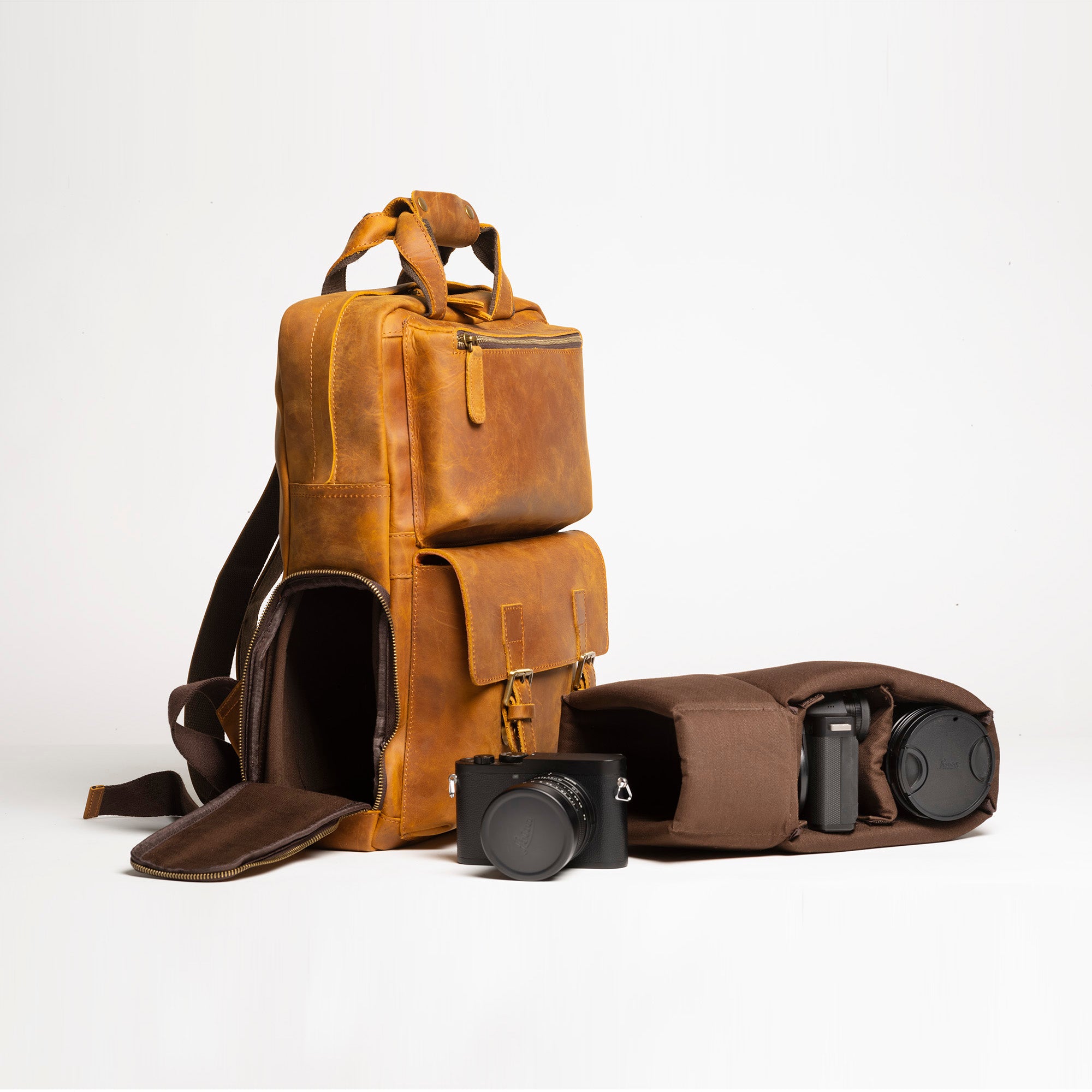
Leaving behind the Gaetano's sturdy tripod holder, let's shift our focus to another gem - The MANN Bag. This large-capacity leather camera backpack is a testament to impeccable craftsmanship and style. The bag's durability is unrivaled, thanks to the use of high-quality crazy horse leather, renowned for its strength and unique vintage appeal.
The MANN Bag's storage capacity is equally impressive with room for a 17' laptop, camera gear, and personal items. Comfortable straps ensure you can carry your gear without straining your shoulders.
The bag's secure pockets, including an anti-theft hidden back zipper compartment, offer safe storage for your valuables. Coupling practicality with stylish designs, the MANN Bag is truly an embodiment of freedom for the roaming photographer.
Day to Day Care and Maintenance of Leather Backpacks
To keep your leather backpack in prime condition, day-to-day care and maintenance are essential. Start by developing a regular cleaning routine that involves wiping away dust and dirt with a soft, dry cloth after each use. This simple step can prevent buildup that may lead to scratches or discoloration. Additionally, consider using a leather conditioner once a month to nourish and protect the leather, especially in dry climates where the material can become brittle. Store your backpack in a cool, dry place, and use dust bags or covers when not in use to shield it from environmental hazards. For those inevitable scuff marks, a gentle rub with a specialized leather cleaner can help restore its appearance without damaging the material. Maintaining this daily regimen not only enhances the longevity of your leather backpack but also ensures it remains a timeless accessory that grows more beautiful with each passing adventure.
Simple Hacks and Quick Tips for Leather Backpack Maintenance
When it comes to maintaining your leather backpack, a few simple hacks and quick tips can go a long way in preserving its beauty and functionality. First, consider using a microfiber cloth to wipe down your bag after each use; this prevents dust and dirt from accumulating and keeps the leather looking fresh. Regularly applying a leather conditioner, especially in dry weather, is crucial to retaining the leather's natural oils and preventing cracks. For minor scratches, a dab of coconut oil can work wonders—gently massage it into the affected area to help mask the blemish. Additionally, always store your backpack in a dust bag or cover it with a breathable fabric to protect it from dust and moisture when not in use. Finally, a quick spray of water-repellent treatment can safeguard your bag against unexpected rain or spills. With these straightforward strategies, you can enjoy your leather backpack's elegance and durability for years to come, unlocking the freedom that comes with a well-maintained accessory.
Preventative Measures to Avoid Damage to Leather Backpacks
| Preventative Measure | Description | Benefit |
|---|---|---|
| Careful Placement | Avoiding rough surfaces and spill-prone areas. | Reduces scratches and stains, extending the backpack's lifespan. |
| Regular Conditioning | Applying leather conditioner to create a protective barrier. | Prevents drying and cracking, maintaining suppleness, especially in changing weather. |
| Dust Cover Storage | Using a dust cover when the backpack is not in use. | Shields from dust and scratches during storage. |
| Weatherproofing Treatment | Applying a treatment to protect against rain and spills. | Guards against water damage and stains. |
| Avoid Overloading | Refraining from carrying excessive weight. | Prevents stress on seams and general wear and tear, maintaining structural integrity. |
Preventative measures are key to preserving the beauty and functionality of your leather backpack. To start, always be mindful of where you place your bag; avoiding rough surfaces and areas prone to spills can significantly extend its life. Regularly applying a leather conditioner creates a protective barrier, helping to prevent drying and cracking, especially in fluctuating weather conditions. Additionally, opt for a dust cover when your backpack is not in use; this simple step can shield it from dust and potential scratches associated with everyday storage. Consider investing in a weatherproofing treatment to guard against unexpected rain or spills, as prevention is always better than cure. Lastly, refrain from overloading your backpack; excessive weight can stress the seams and lead to unwanted wear and tear, ensuring your leather investment remains a reliable companion for years to come.
Frequently Asked Questions
What Are Some Environmentally Friendly Ways To Care For A Leather Backpack?
Unleash your inner eco-warrior with these green methods for natural leather.
Opt for natural cleaners to cleanse your leather backpack gently. Use a damp cloth or soft cloth with mild soap solution for regular cleaning of the leather surface. Biodegradable conditioners will keep it supple without harming Mother Earth. Apply leather conditioner using a circular motion to maintain the leather supple and prevent dry leather.
Sustainable storage is a must to maintain its pristine condition. Keep leather backpacks away from direct sunlight and heat sources to prevent permanent damage. Use eco-friendly polishing agents with a lint-free cloth to give it that enviable sheen and preserve the natural grain.
Lastly, green waterproofing is your shield against the elements. For deeper cleaning, consider using saddle soap applied with a soft brush for dirt buildup. These essential steps not only preserve your backpack but also uphold your freedom to choose environmentally conscious leather care for your quality leather investment.
How Often Should I Condition My Leather Backpack To Keep It In Good Shape?
Your conditioning frequency depends on usage and climate, but generally, condition your backpack every month for optimal results. In a dry climate, you might need regular conditioning more frequently to maintain leather soft and prevent future damage.
Product selection is paramount; choose high-quality leather conditioner that doesn't contain harsh chemicals that could harm the type of leather. For genuine leather and full-grain leather, special care with appropriate leather creams ensures longevity.
Conditioning techniques should involve gentle circular motions with a clean cloth to ensure every crevice is nourished during the conditioning process. After application, wipe off excess with a dry cloth or clean towel.
Regular maintenance extends your backpack's lifespan, maintaining its quality and aesthetic appeal. For leather types like nubuck leather, use appropriate cleaning products designed specifically for that material.
Always test a small portion first to confirm compatibility with your leather items. Remember, proper care leads to freedom, as a well-maintained backpack can accompany you on countless adventures without showing signs of water damage or surface dust.
Does Weather Or Humidity Affect The Maintenance Required For A Leather Backpack?
Yes, climate impact and temperature effects can significantly alter your backpack's maintenance needs. Humidity damage can cause the leather to crack or warp, making weatherproofing techniques and routine maintenance crucial.
In drier climates, regularly condition your bag to prevent it from drying out. Apply leather conditioner to the entire surface using a soft bristle brush for even distribution. During rainy seasons, apply a protective spray in a well-ventilated area to safeguard it from water stains and water damage.
Exposure to sunlight can fade and deteriorate leather products over time, so store your leather bags away from direct heat sources and prolonged exposure to sunlight. For wet leather, gently dab with a dry microfiber cloth and allow to air dry naturally before applying conditioner.
Thus, seasonal care for your bag varies greatly. Always monitor your local weather and adjust your maintenance routine accordingly for the best care of your leather backpack. During periods of extreme weather, extra care and more frequent cleaning efforts may be necessary to maintain the leather's natural markings and durability.
Can I Repair Scratches Or Tears On My Leather Backpack At Home?
Absolutely, you can repair scratches or tears on your leather backpack at home. DIY patching is a practical solution for tear management on leather types including top-grain leather.
For minor scratches, home remedies such as applying a small amount of olive oil or neatsfoot oil can do wonders. For deeper scratches, a matching leather cleaner followed by conditioner can help. Spot cleaning with lukewarm water and a cotton swab works for common stains, while tougher stains might require a mild leather cleaner.
For stubborn stains like ink stains, baking soda or corn starch applied with a damp microfiber cloth can be effective on smooth leather surfaces. Always follow with gentle care using a dry towel to remove any cleaning solution.
Regularly condition your backpack for scratch prevention and to keep the leather supple. For quick cleaning of surface dirt, a lint roller or suede brush (depending on your leather type) can be a crucial step in daily maintenance.
If these cleaning methods don't work, consider a professional leather restoration service. It's your backpack, you have the freedom to keep it looking its best by choosing the appropriate leather care tips for your specific durable material.
Are There Any Specific Brands Of Leather Backpacks That Require Unique Care Methods?
Did you know that nearly 75% of luxury bags require brand-specific treatments?
If you own a designer backpack, you'll likely need special cleaning products and a custom care routine. Different types of leather such as pigmented leather, aniline leather, or corrected-grain leathers each require specific cleaning methods.
For artificial leather or faux leather backpacks, mild detergent with cool water works well, but never use a washing machine as machine washing causes common issues. Instead, use a soft cloth with distilled water for regular care on a daily basis.
For genuine leather and high-quality leather backpacks, avoid abrasive materials and harsh chemicals that can damage the leather messenger or leather handbags. Instead, use warm water with mild soap solution for the cleaning process, followed by leather conditioner applied with a dry cloth to keep the leather items in pristine condition.
It's all about preserving your freedom to enjoy your investment for years to come. Always check the care instructions for your specific leather type, as each natural material has its unique needs requiring different approaches to maintain its natural beauty and prevent common issues that affect leather backpacks.
Conclusion
Caring for your leather backpack is like tending to a fine wine; it requires knowledge, patience, and a gentle touch. Now you're equipped with the know-how to keep your bag looking its best. Whether it's a stubborn stain or regular upkeep, remember: proper care extends your backpack's life, ensuring it ages as gracefully as you do. So, go forth and conquer, with your trusty leather companion by your side.

















